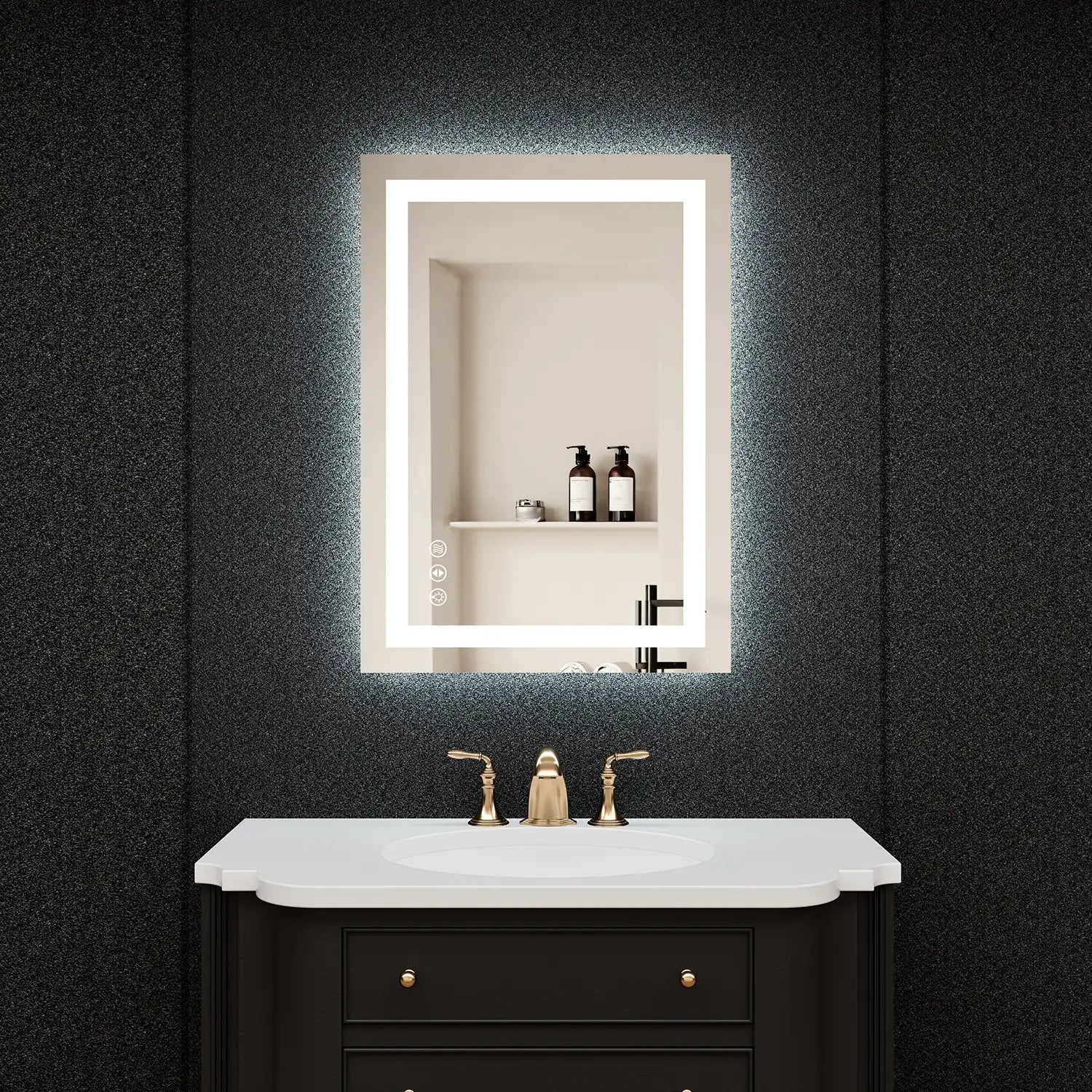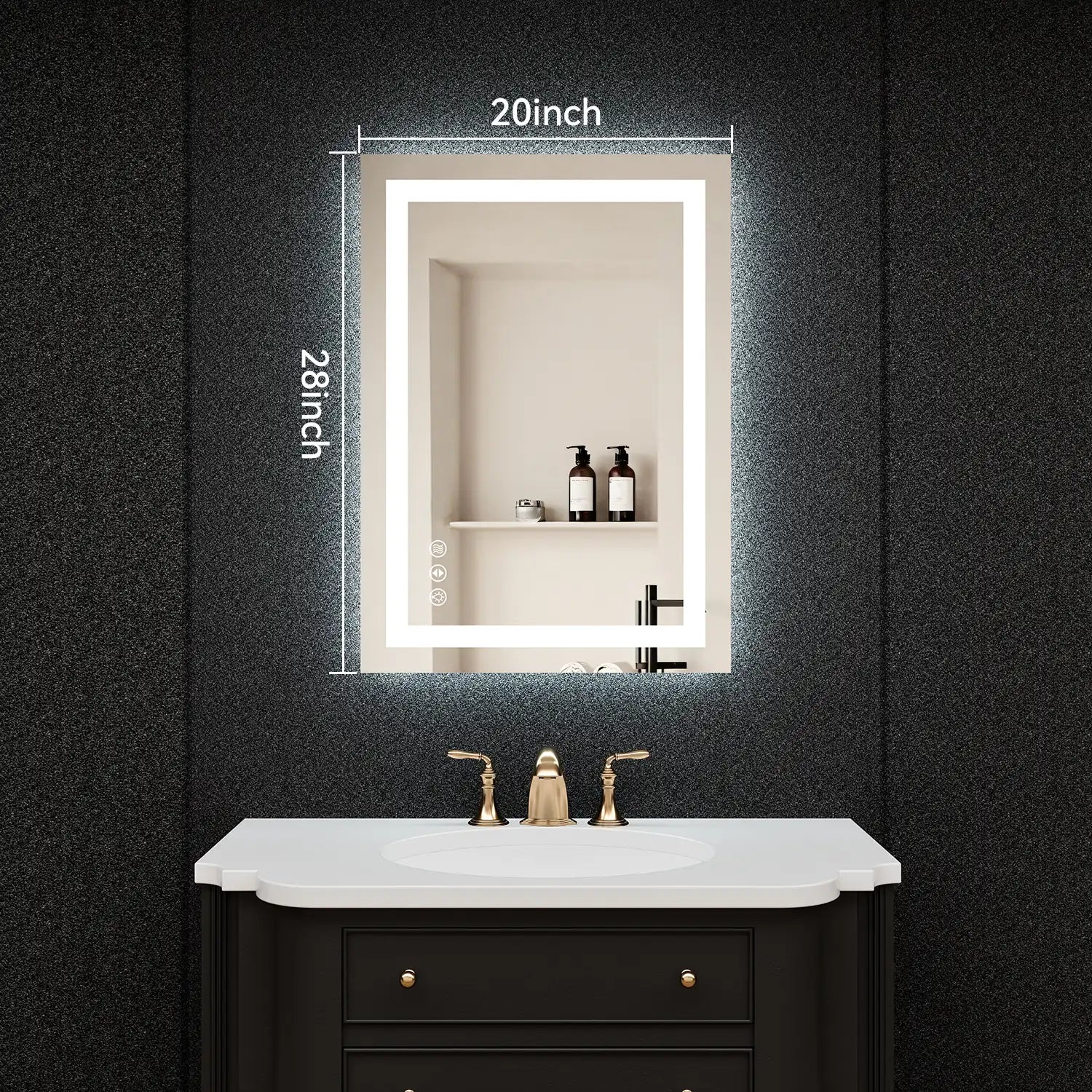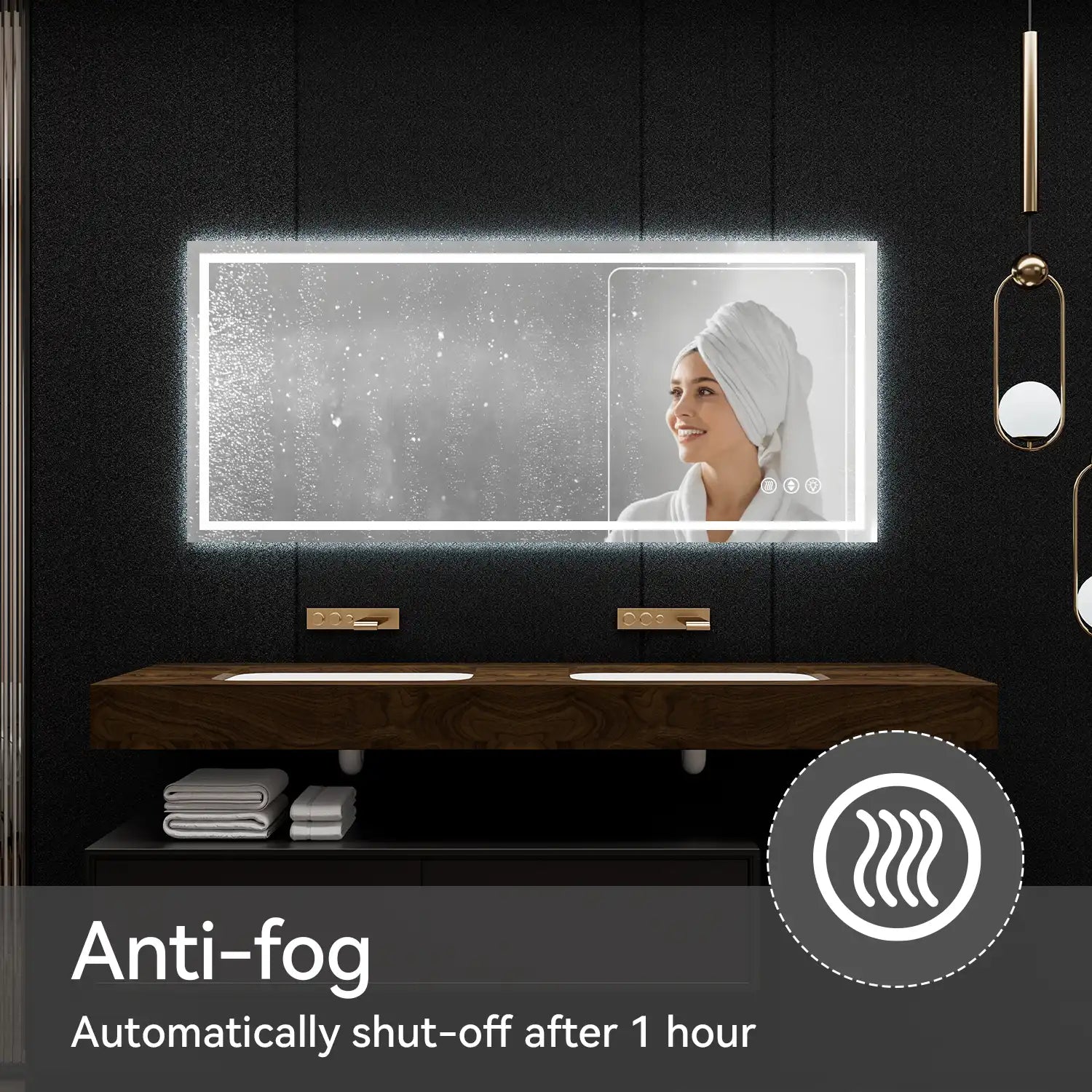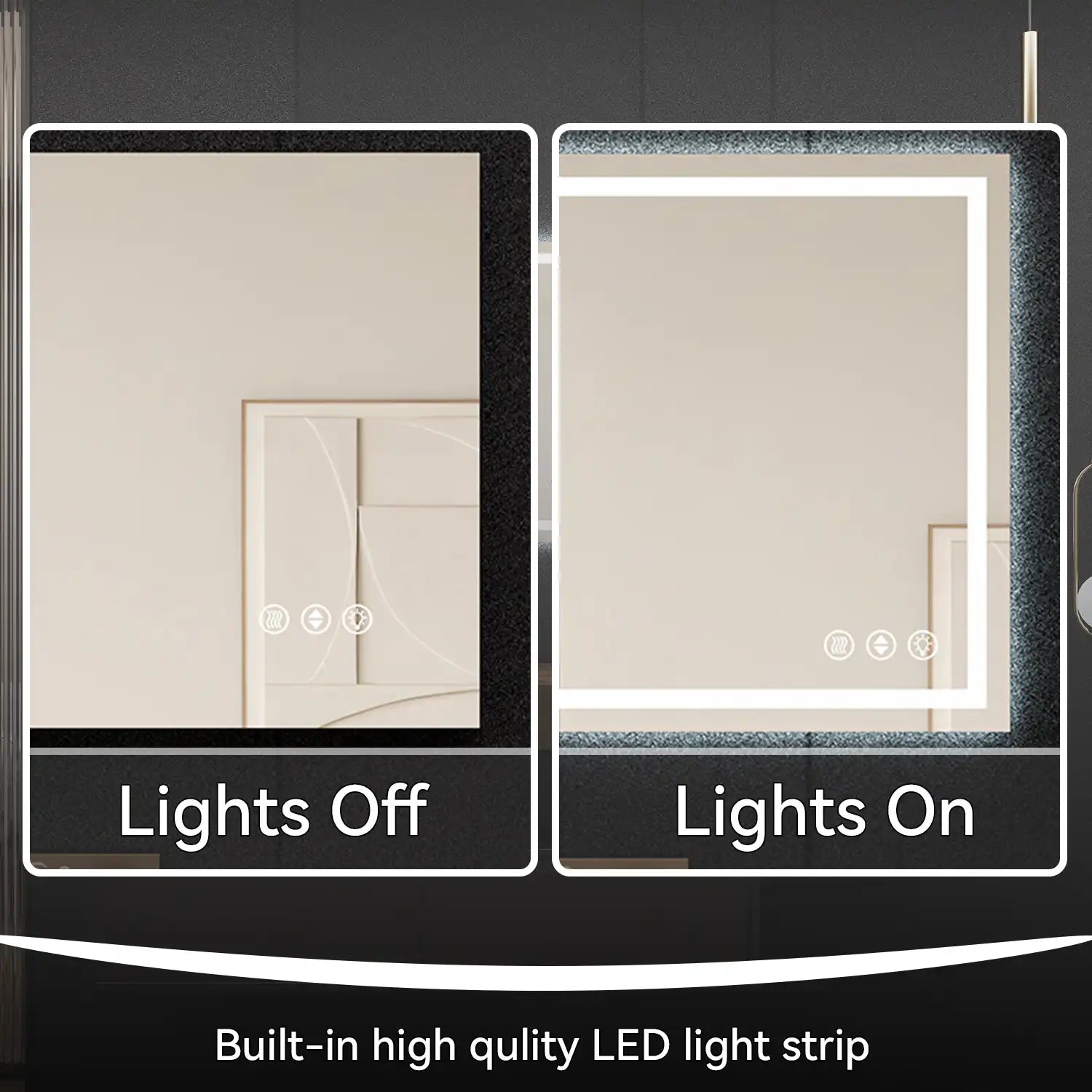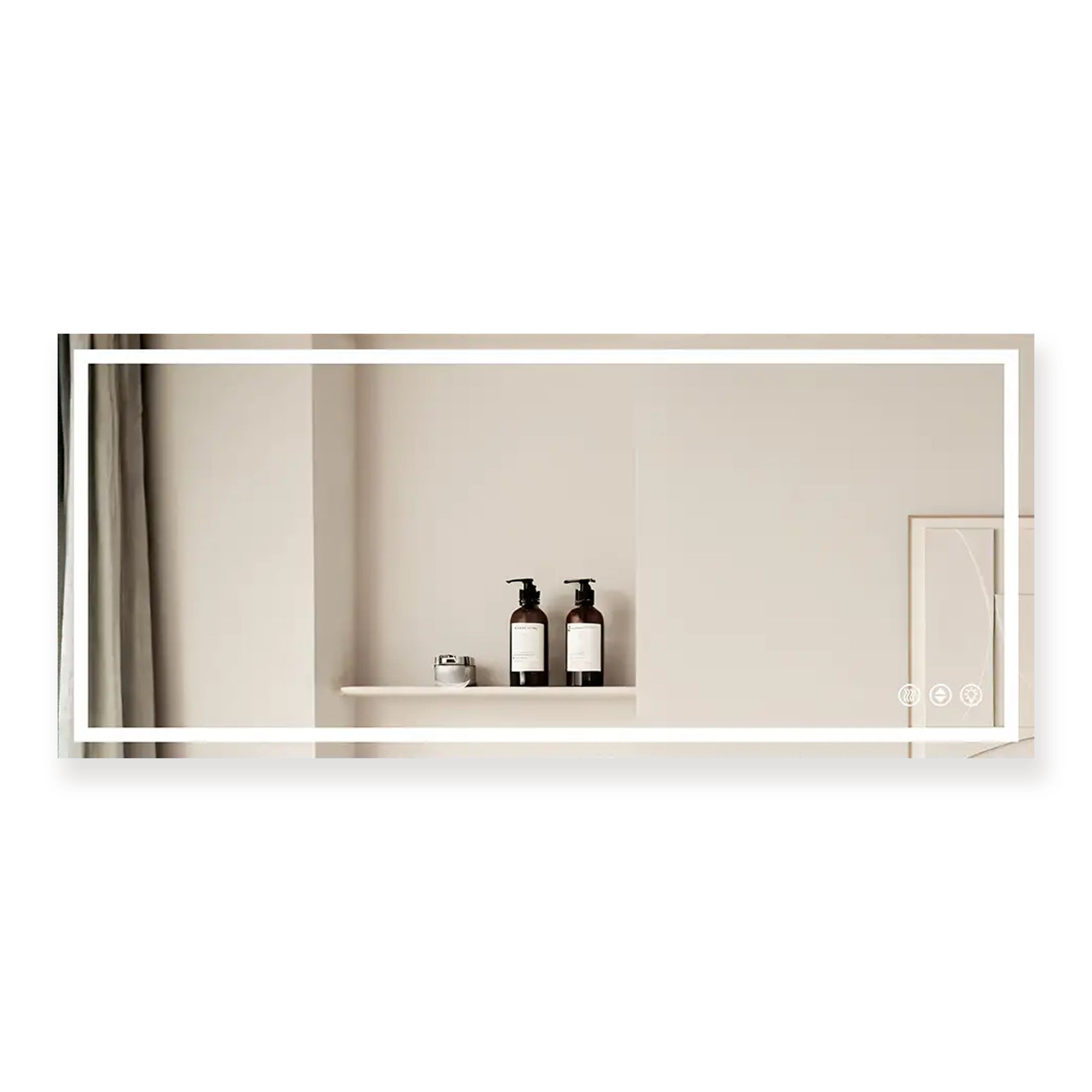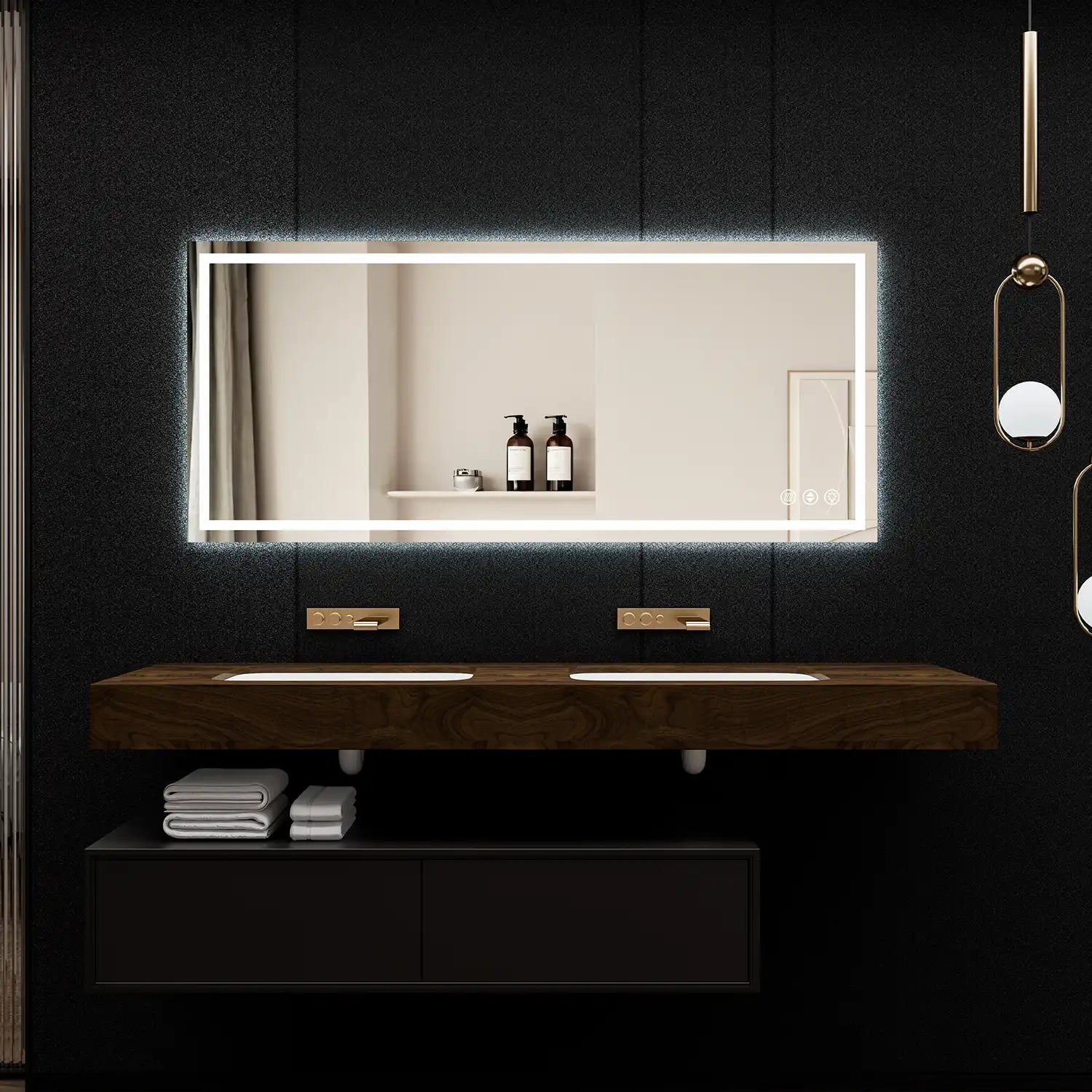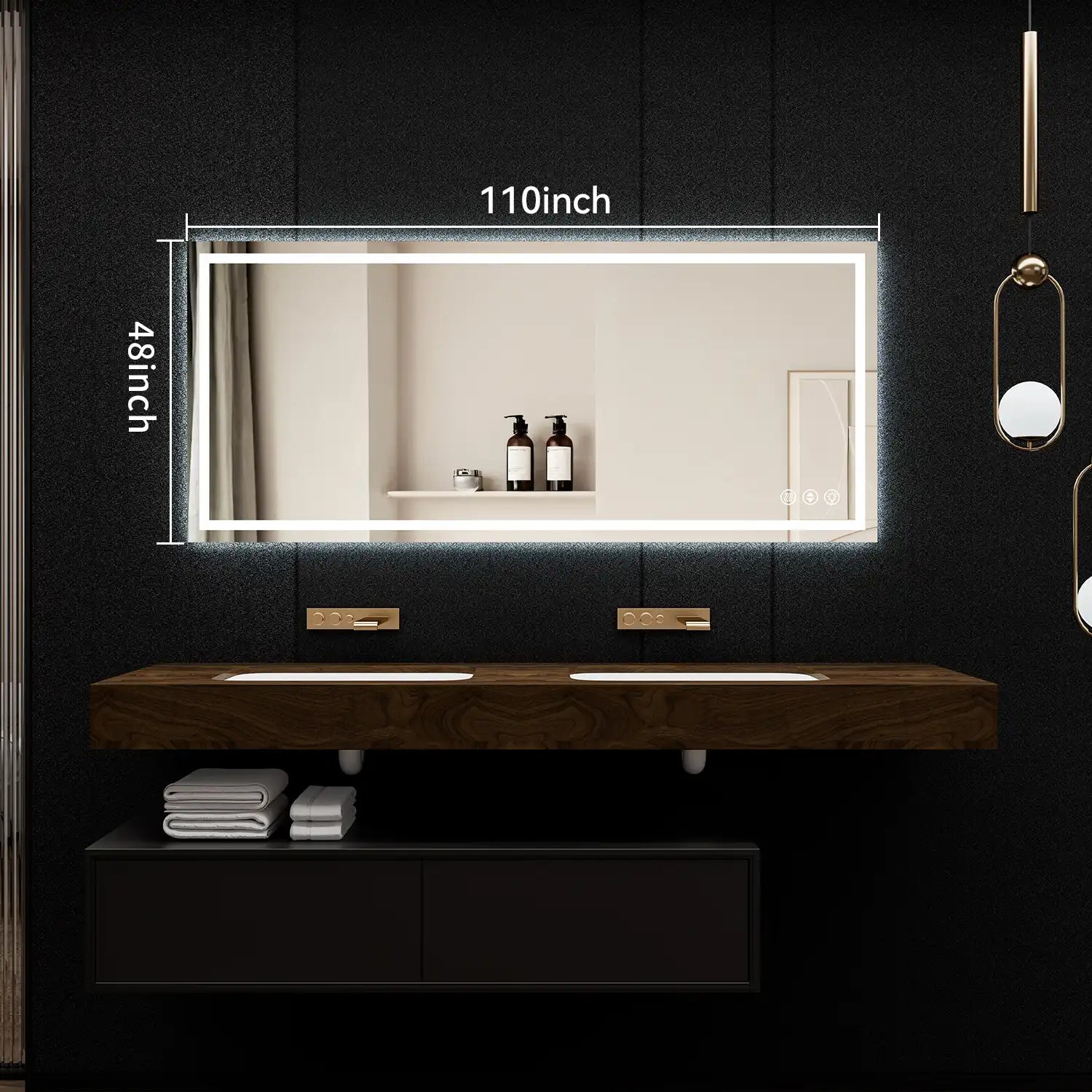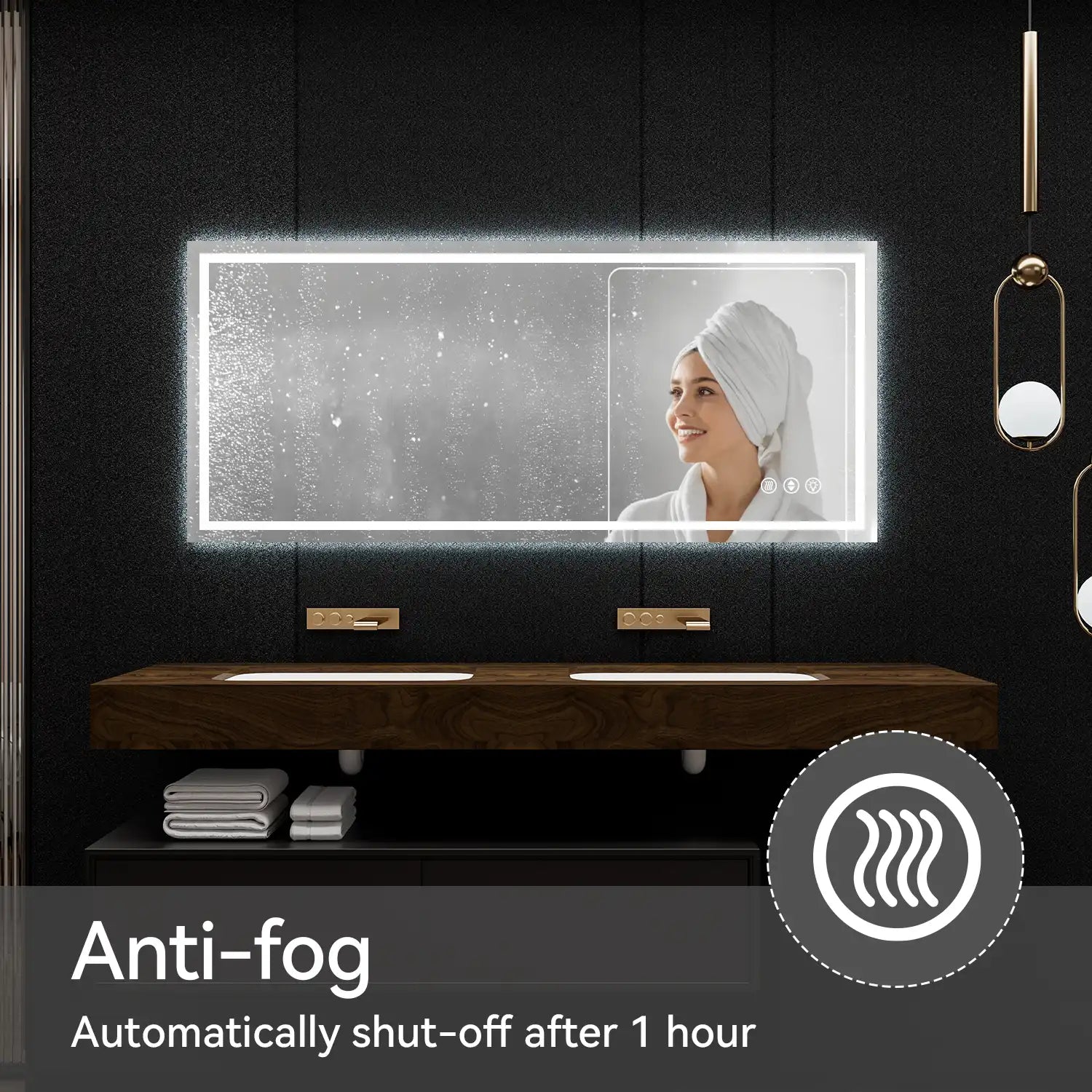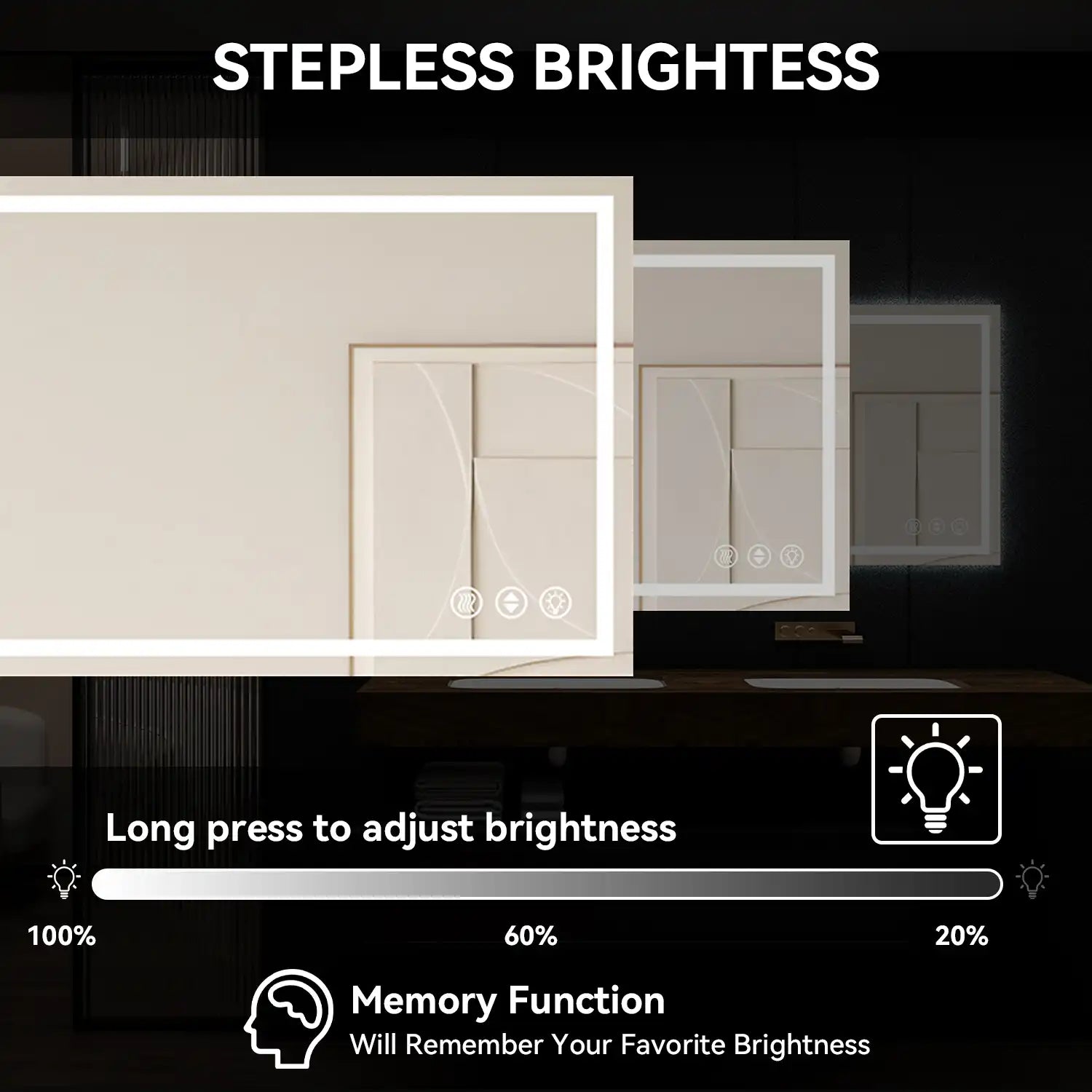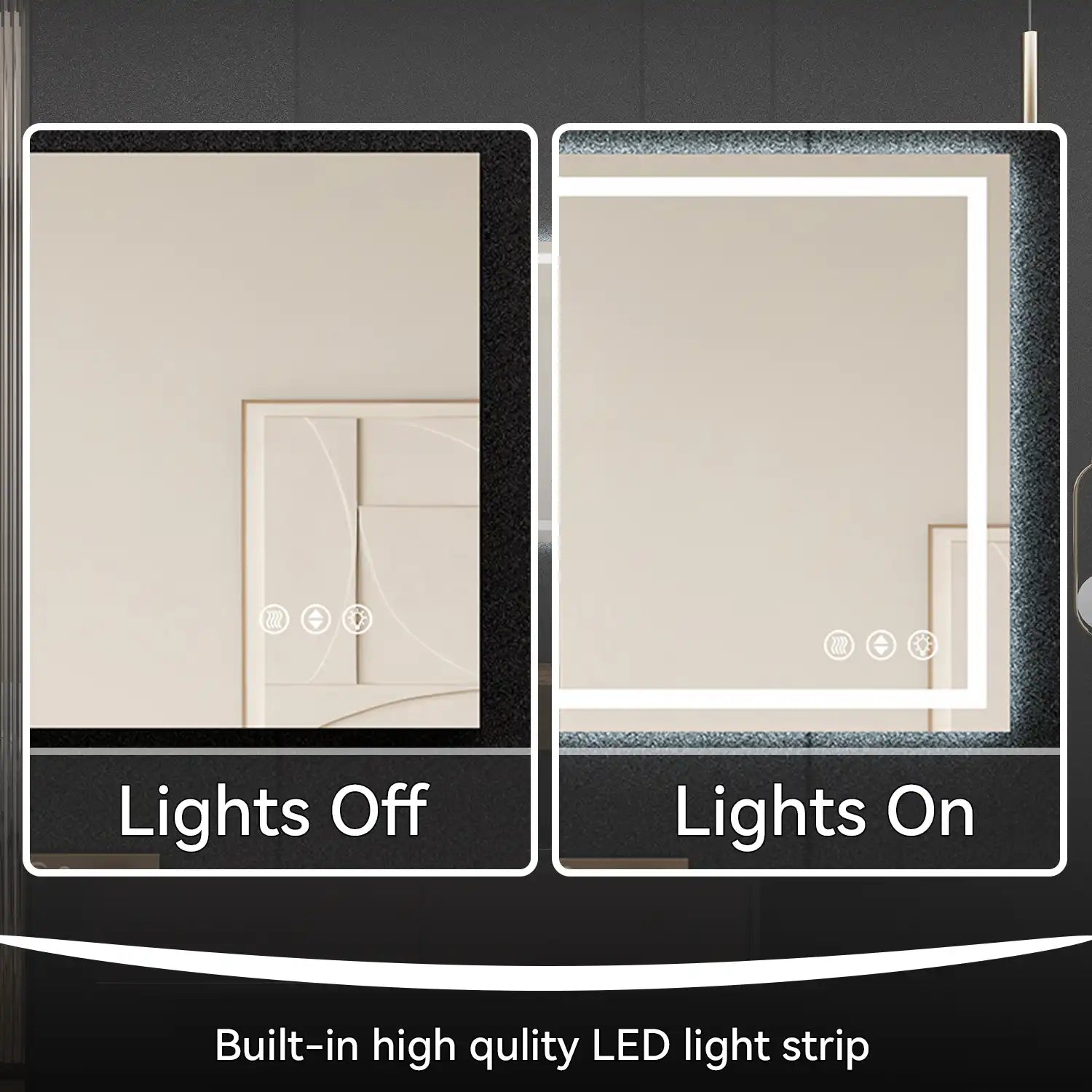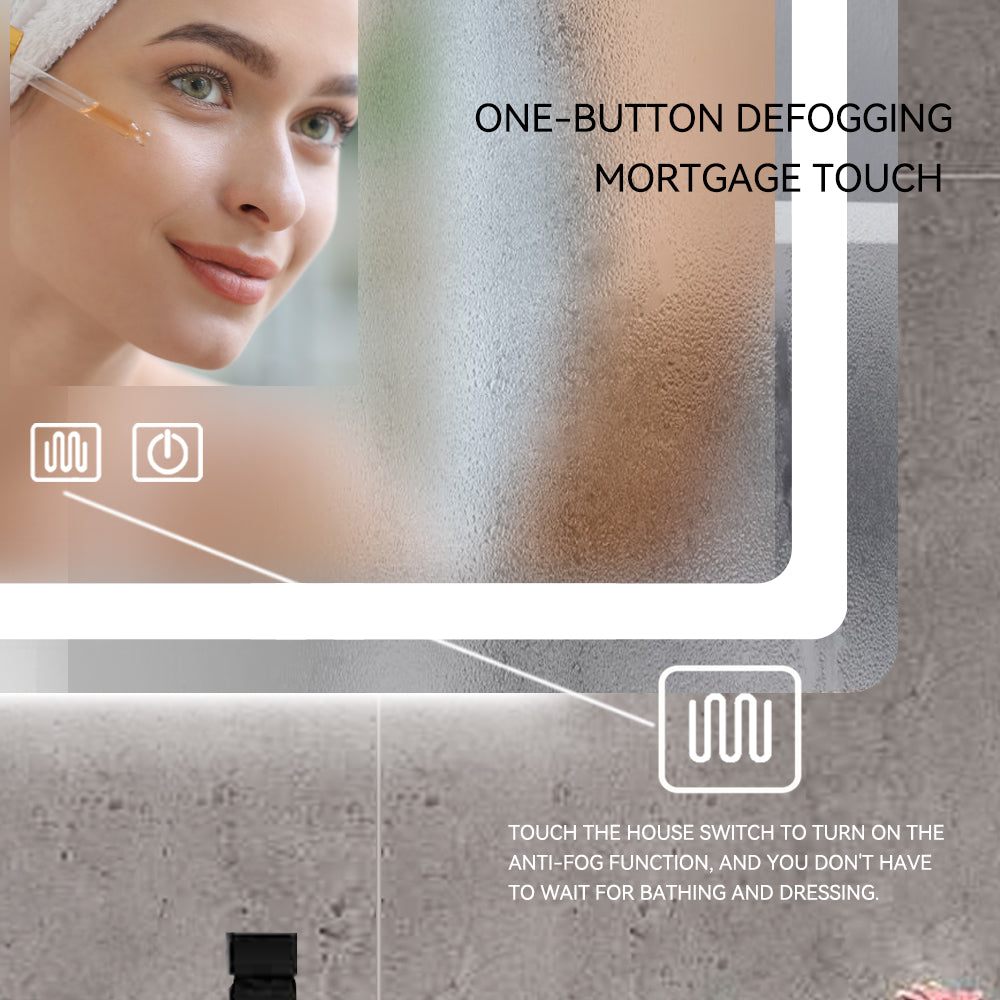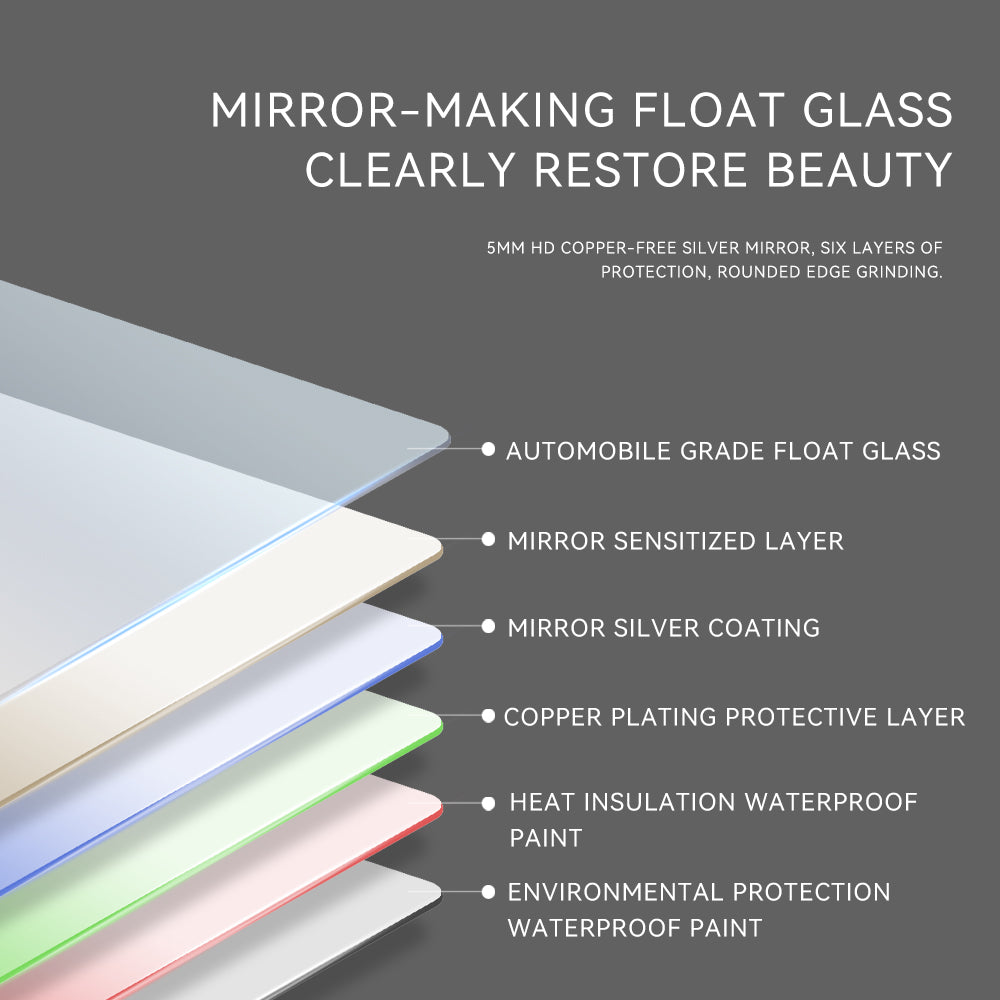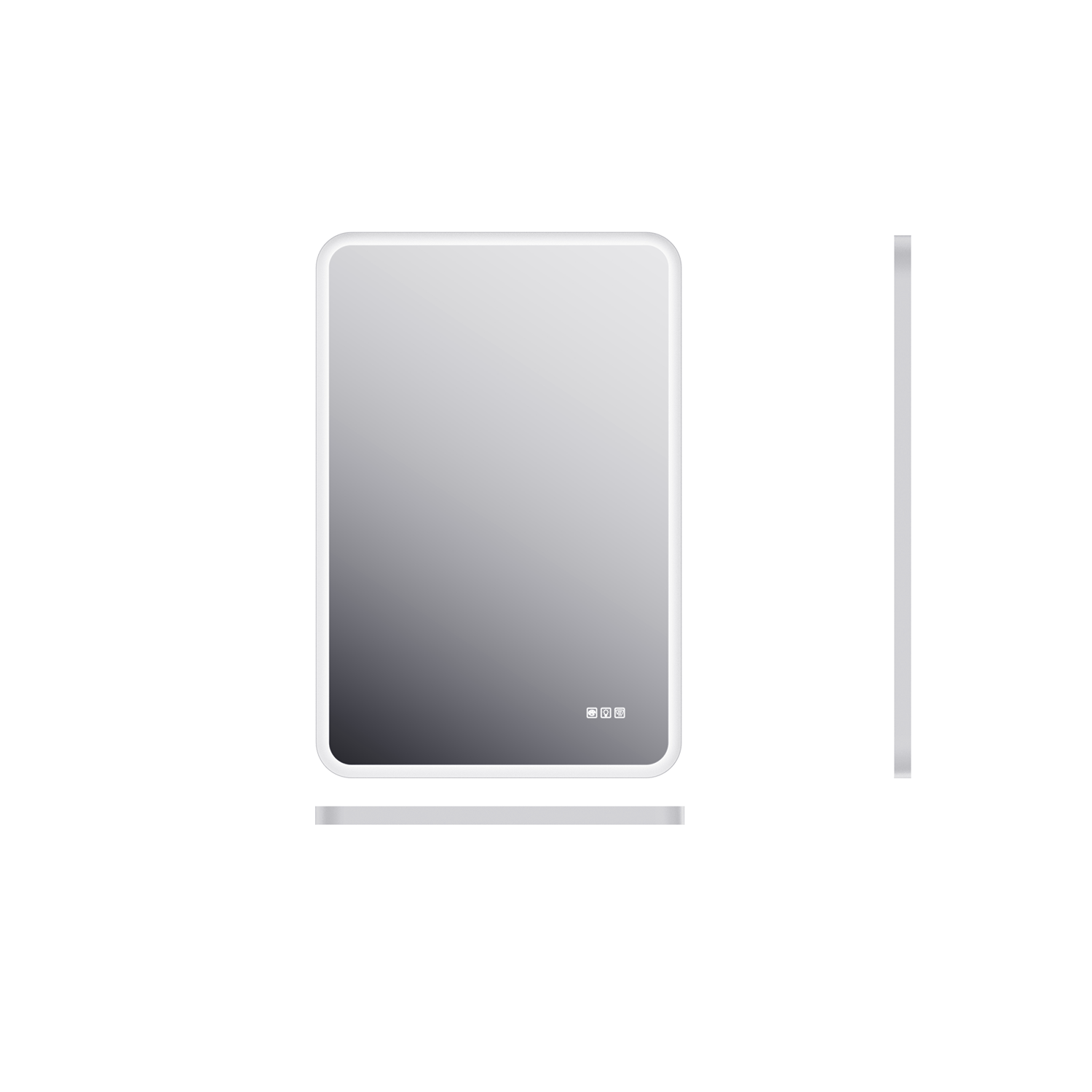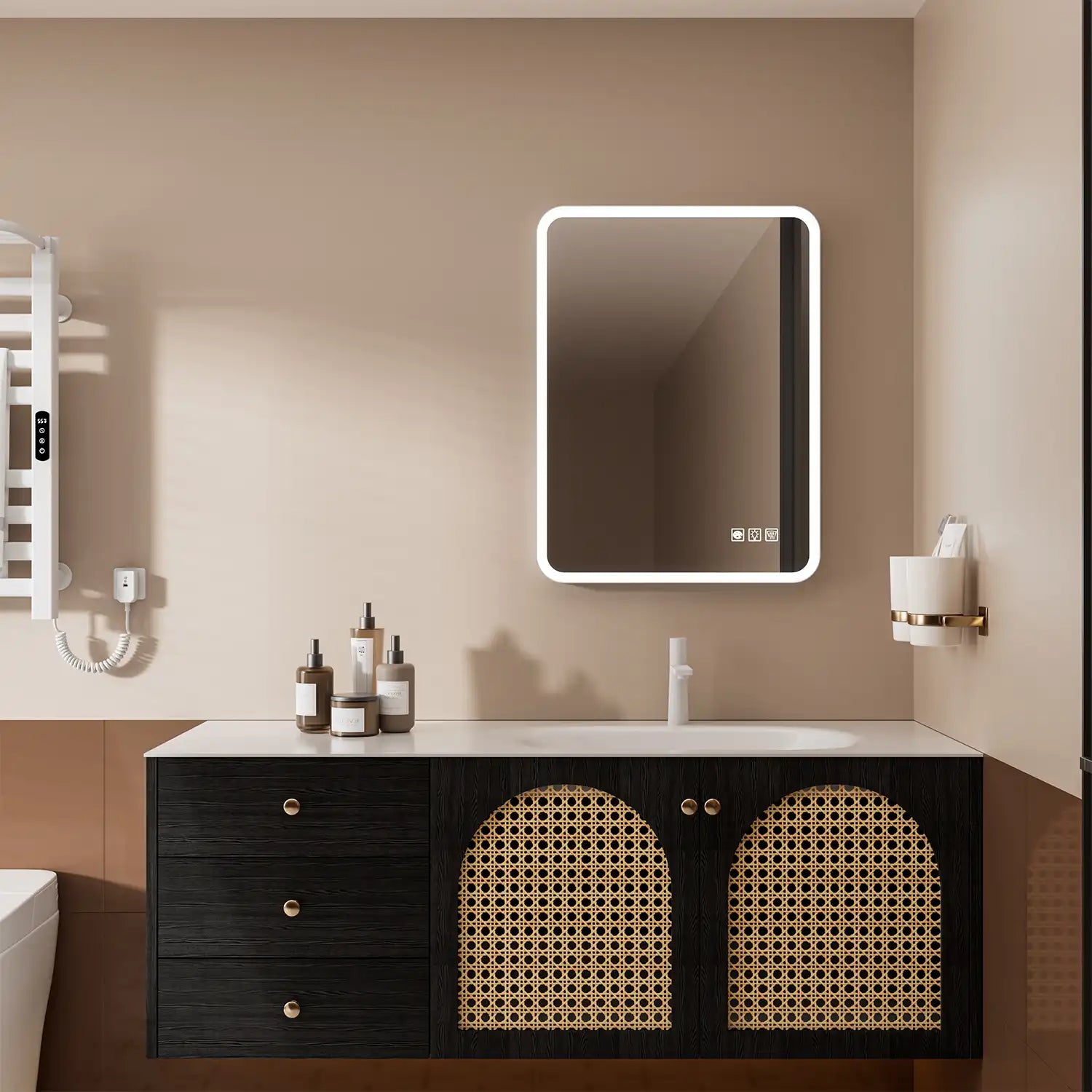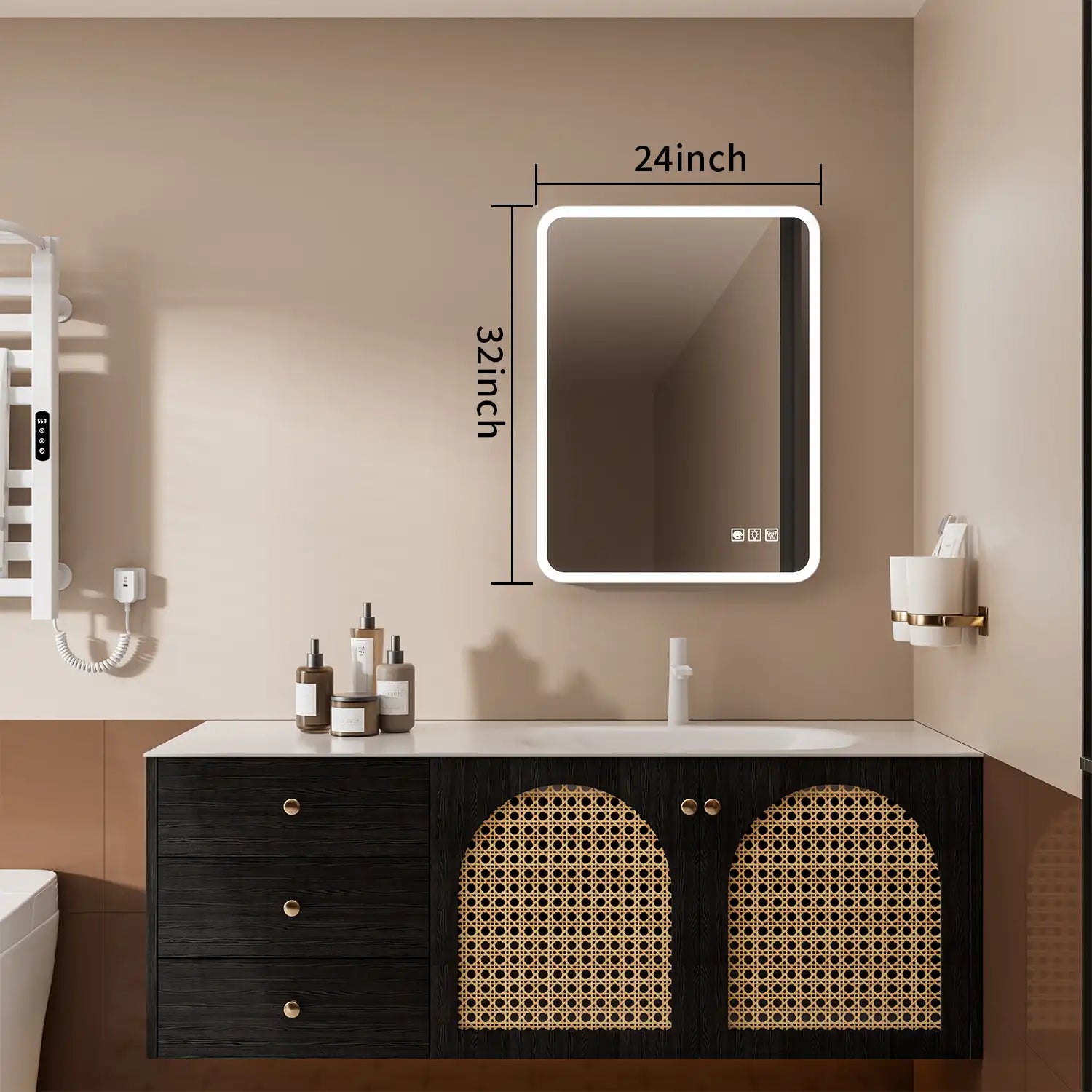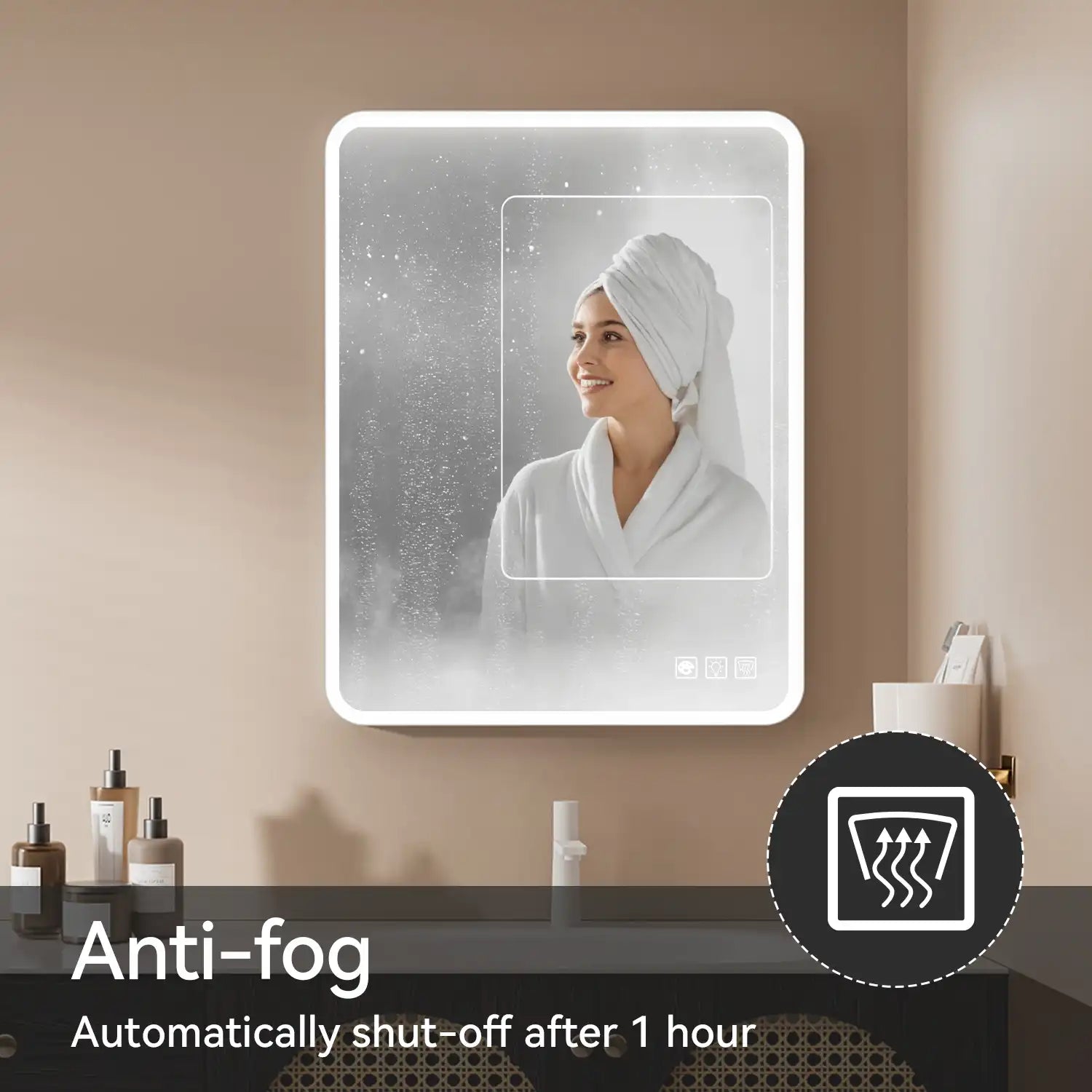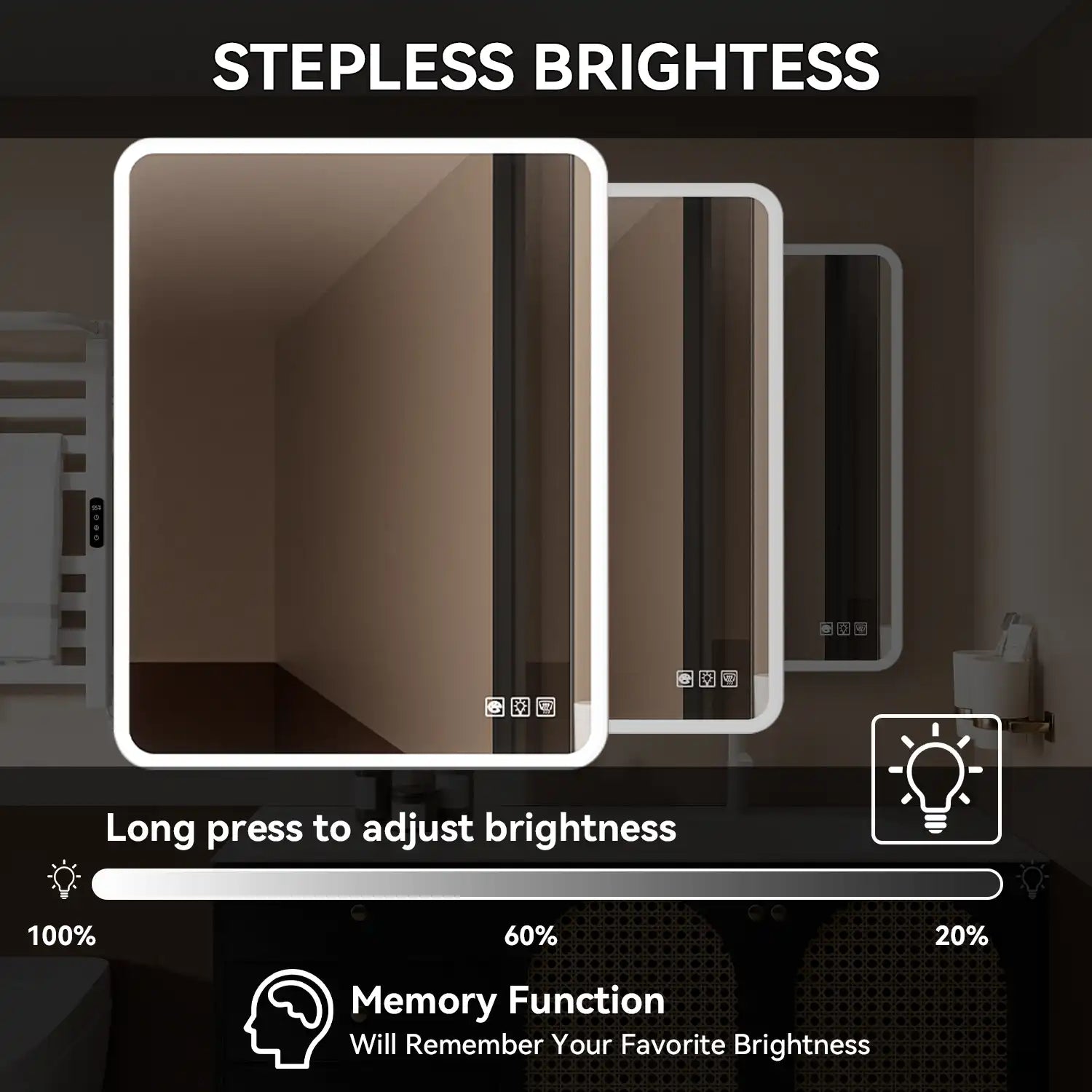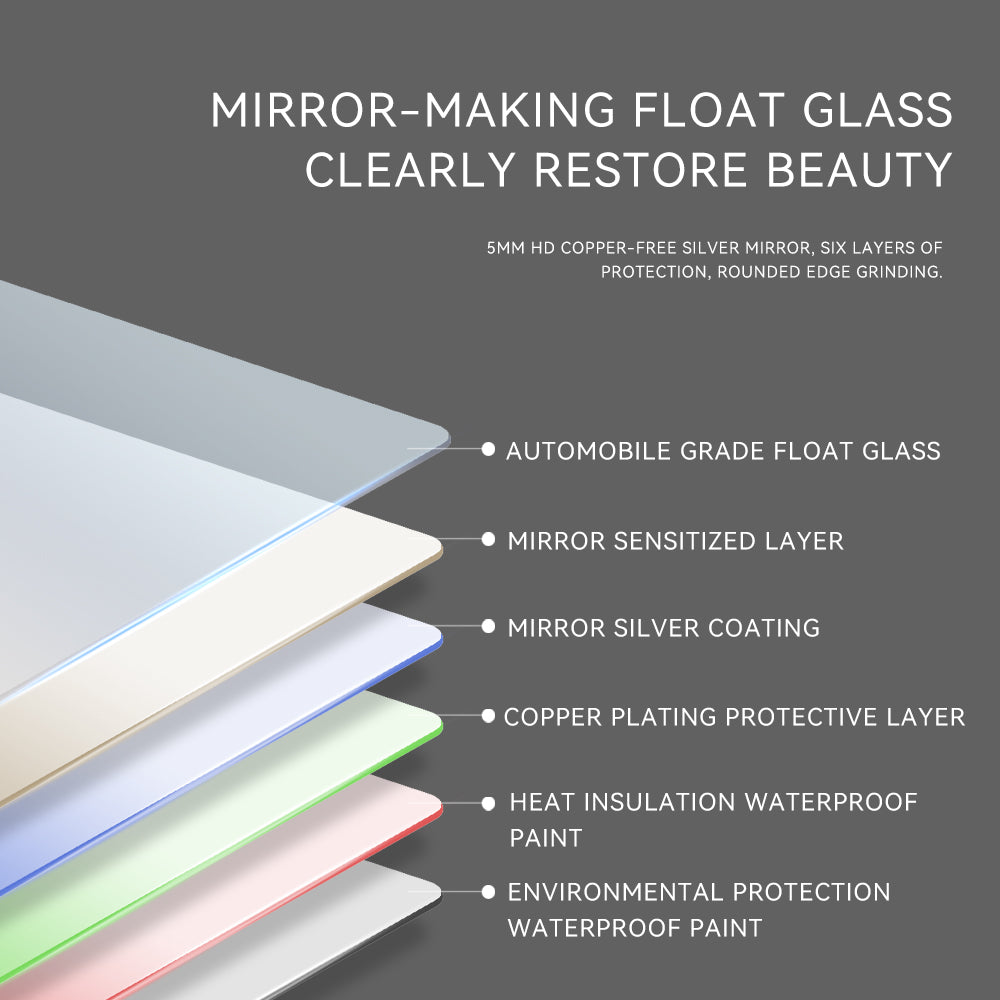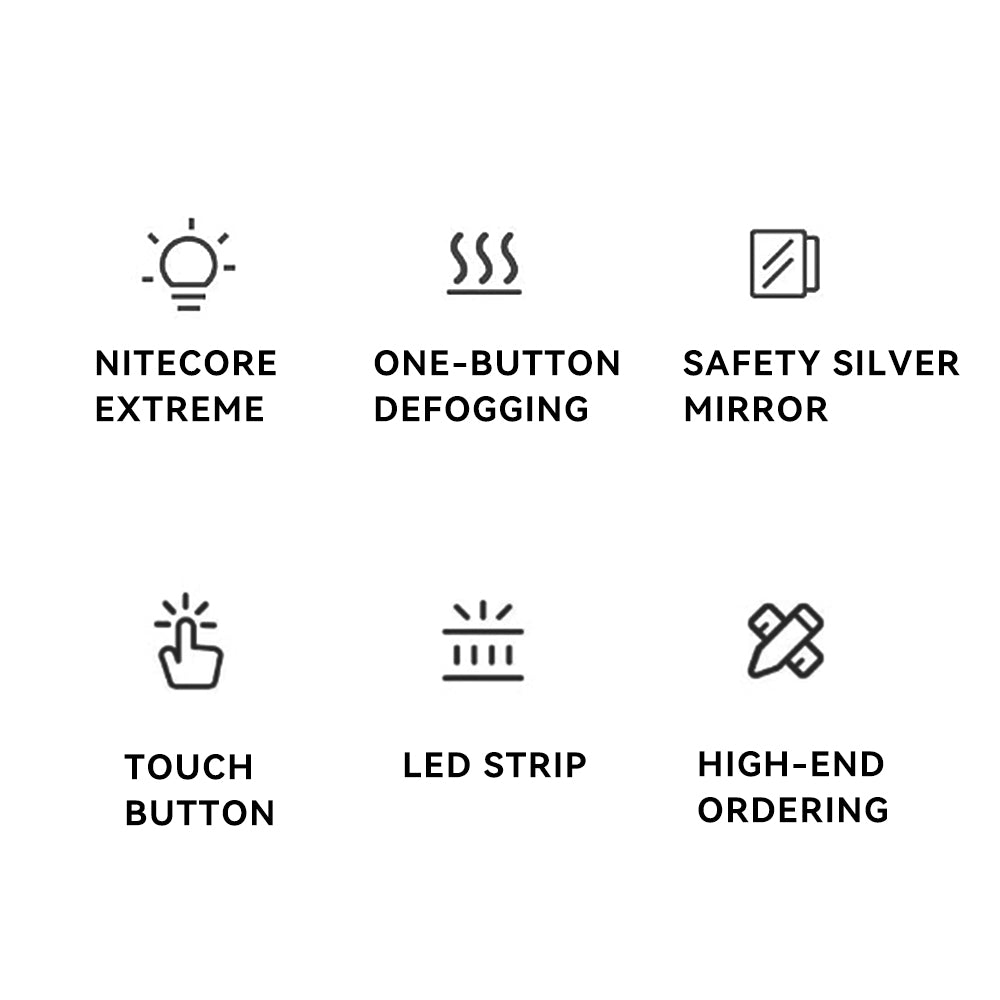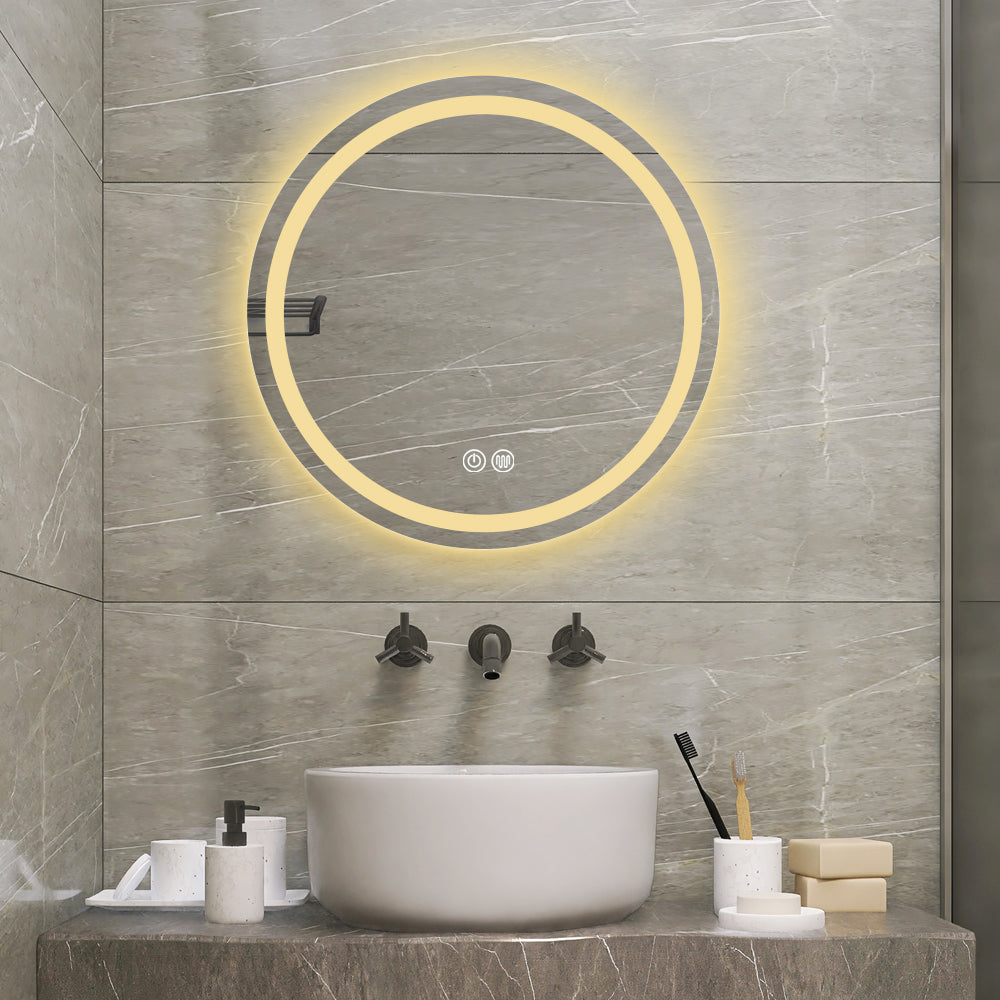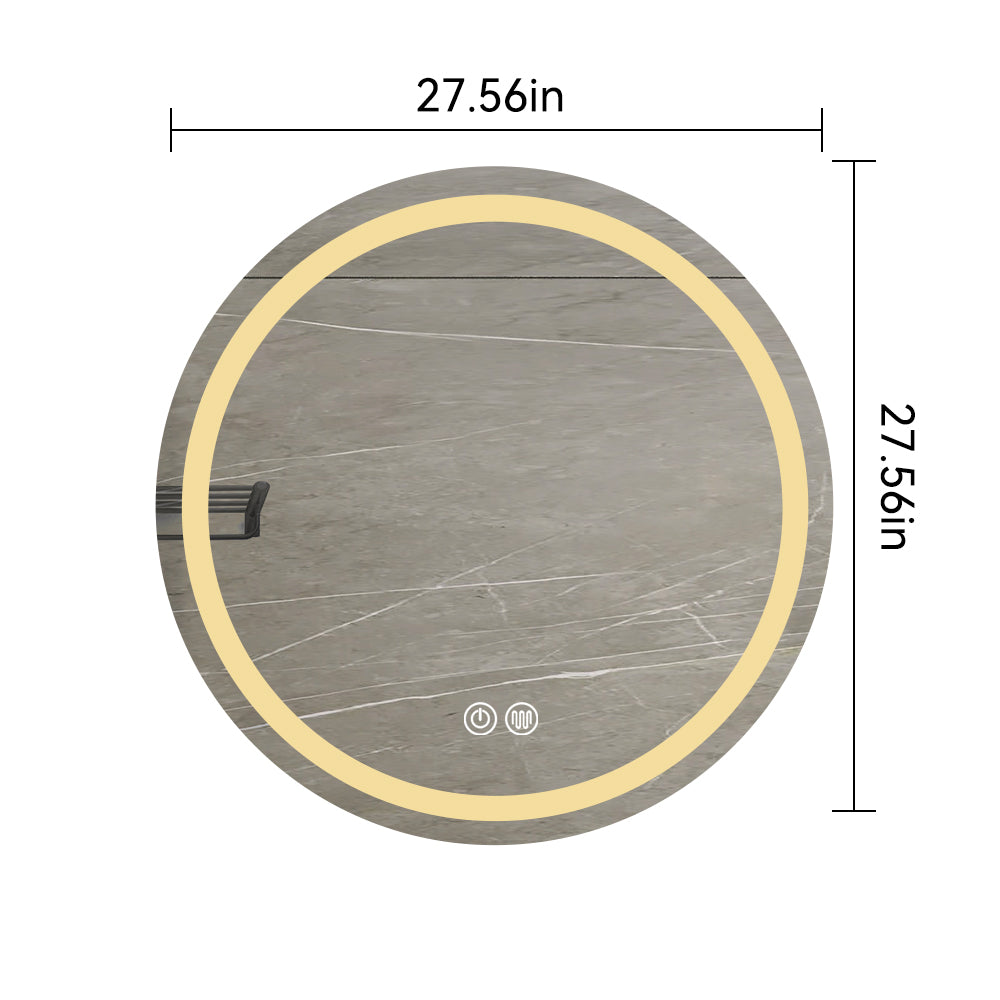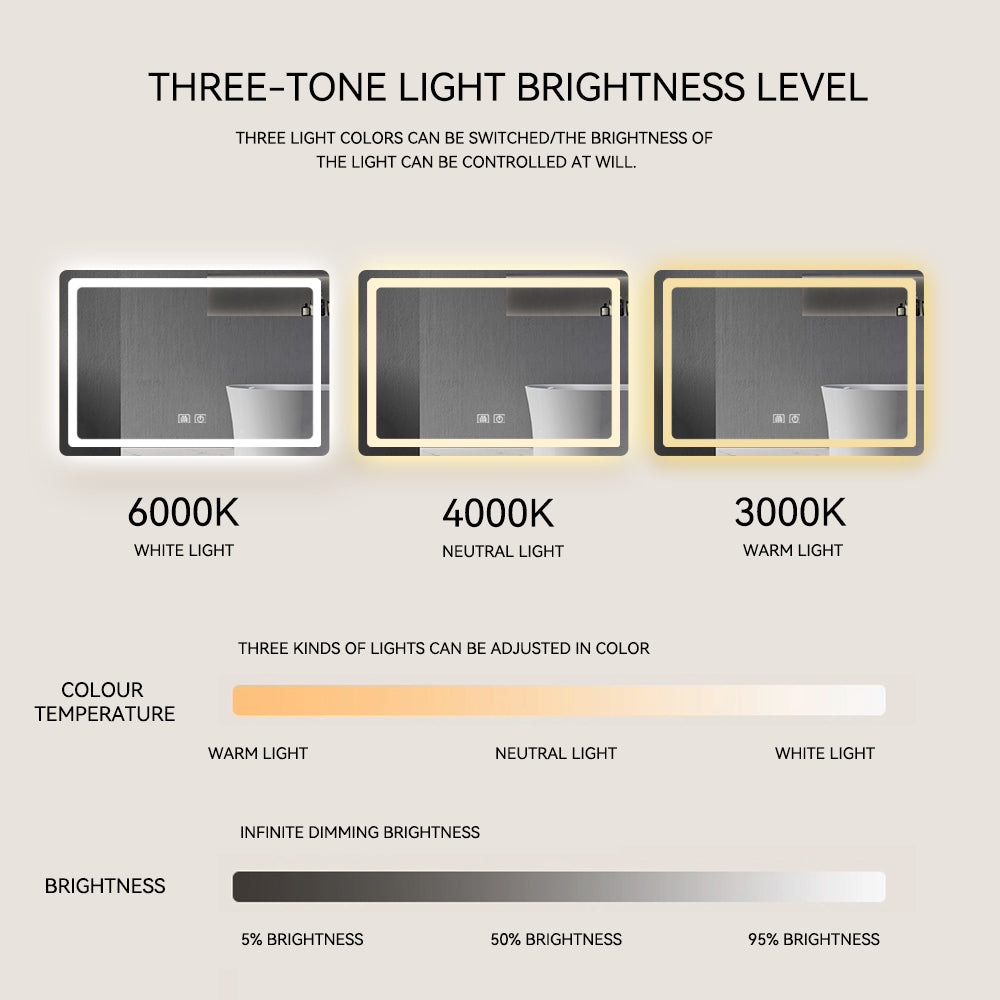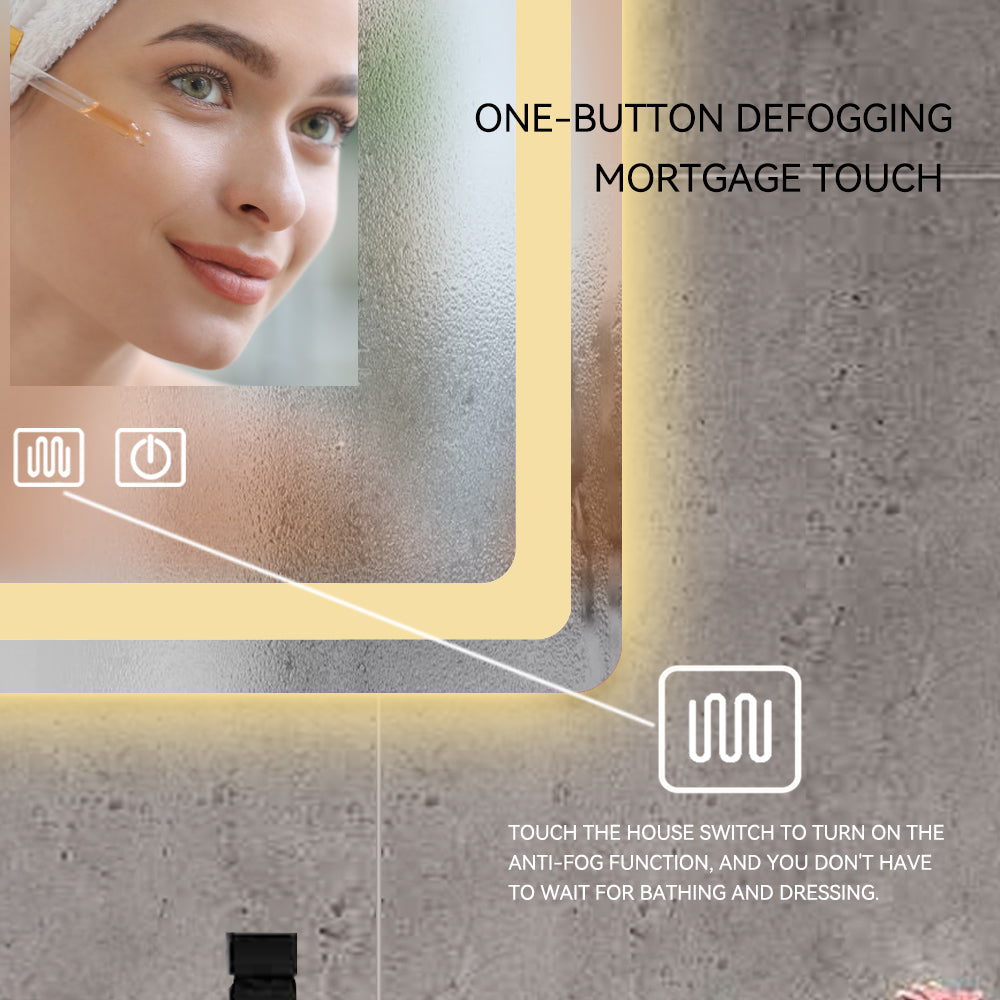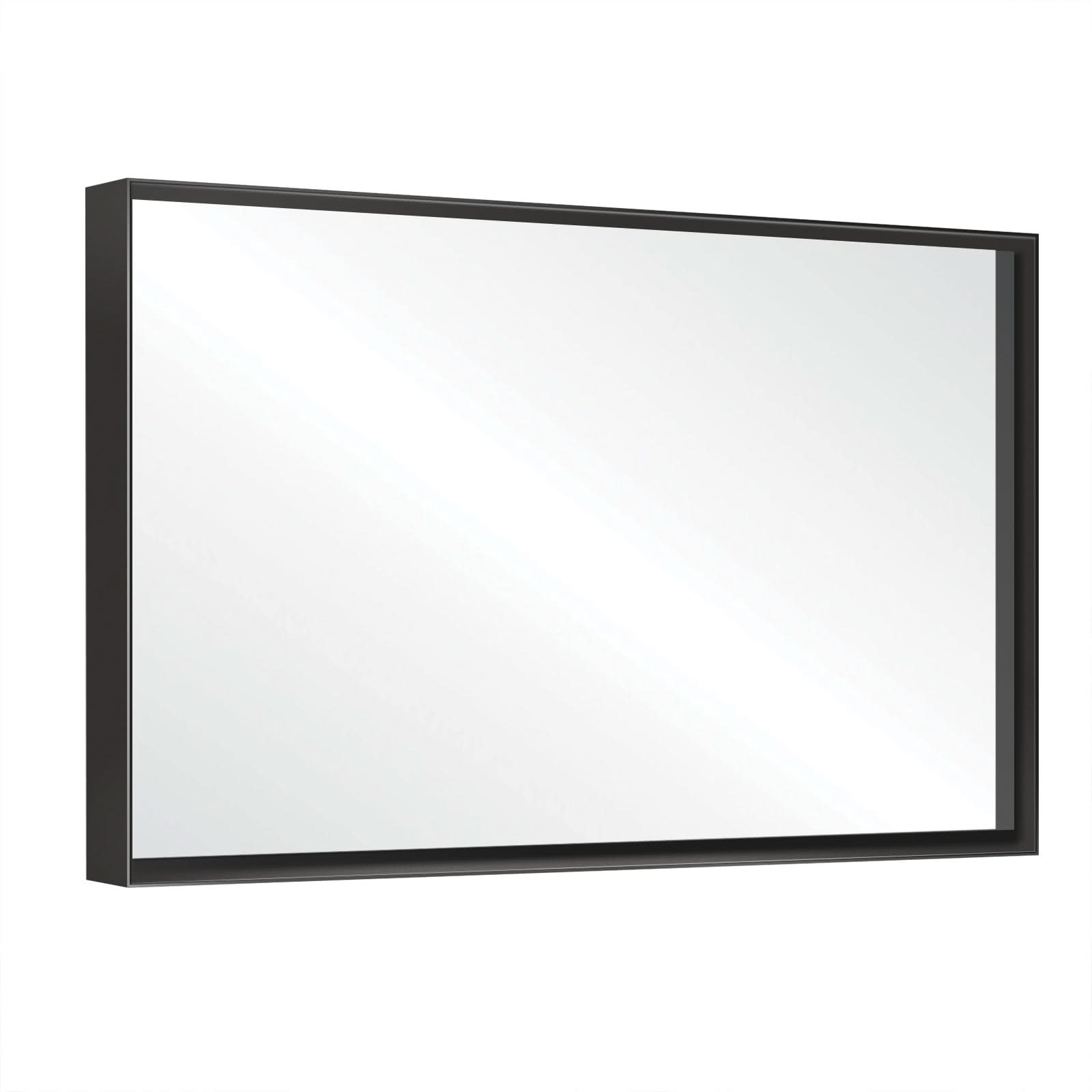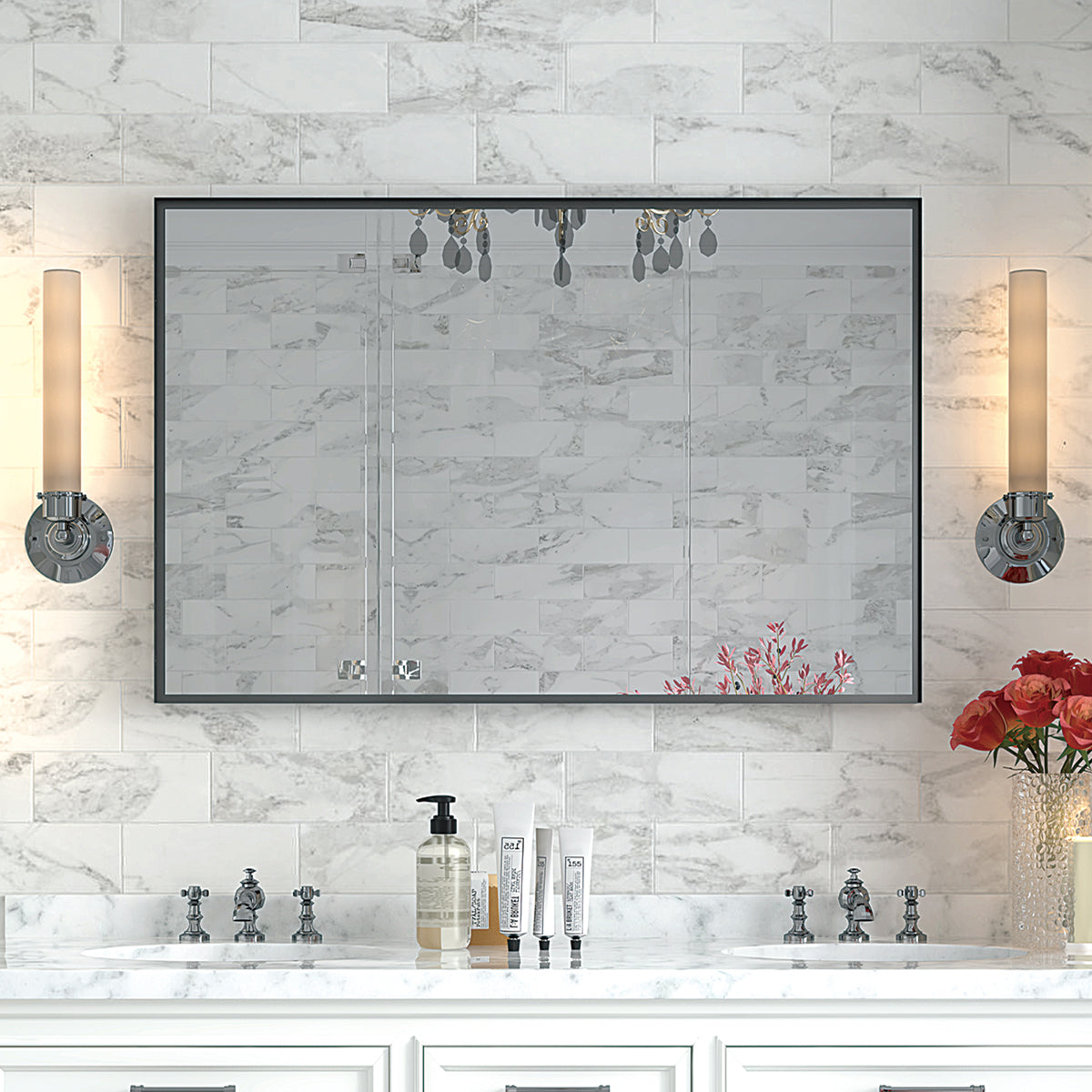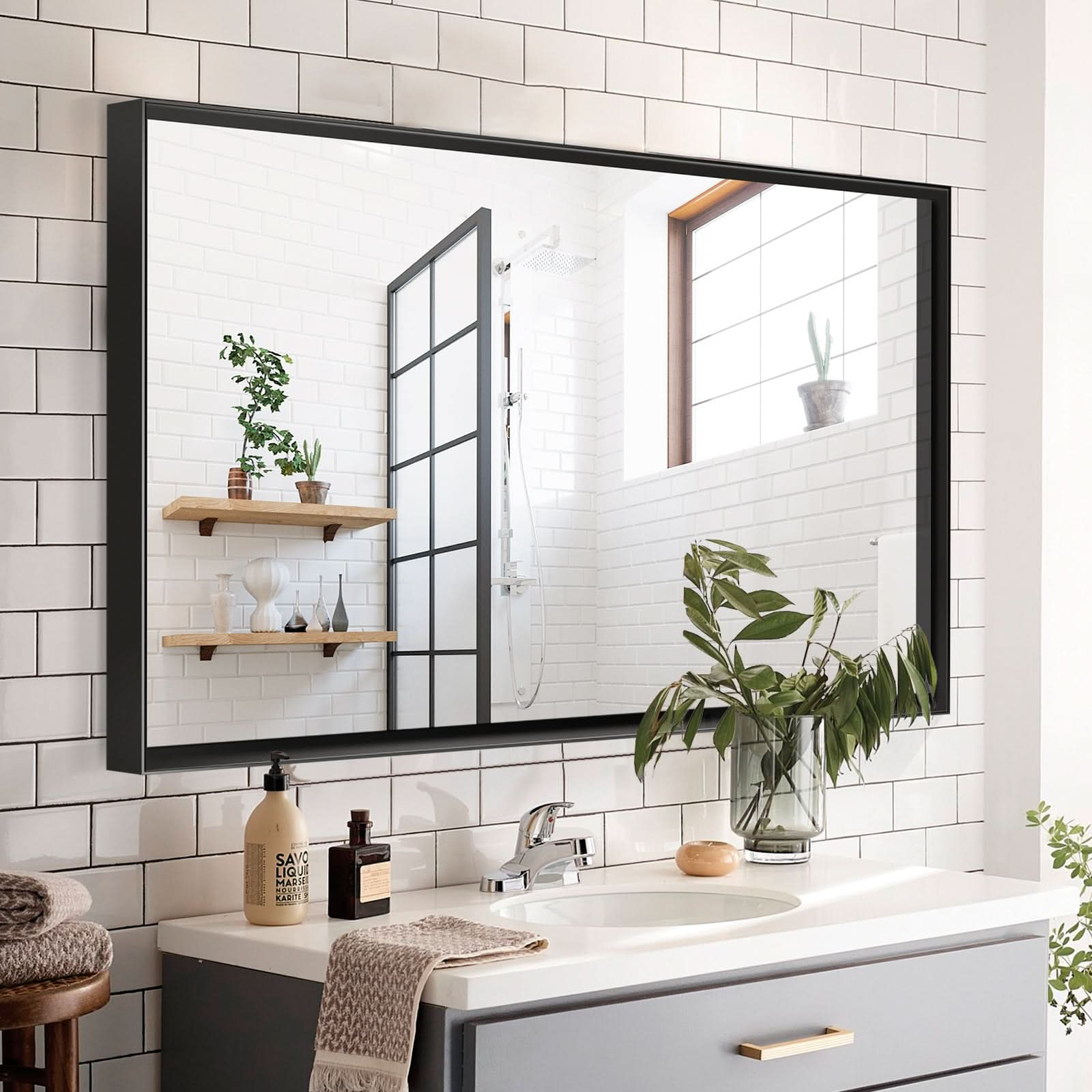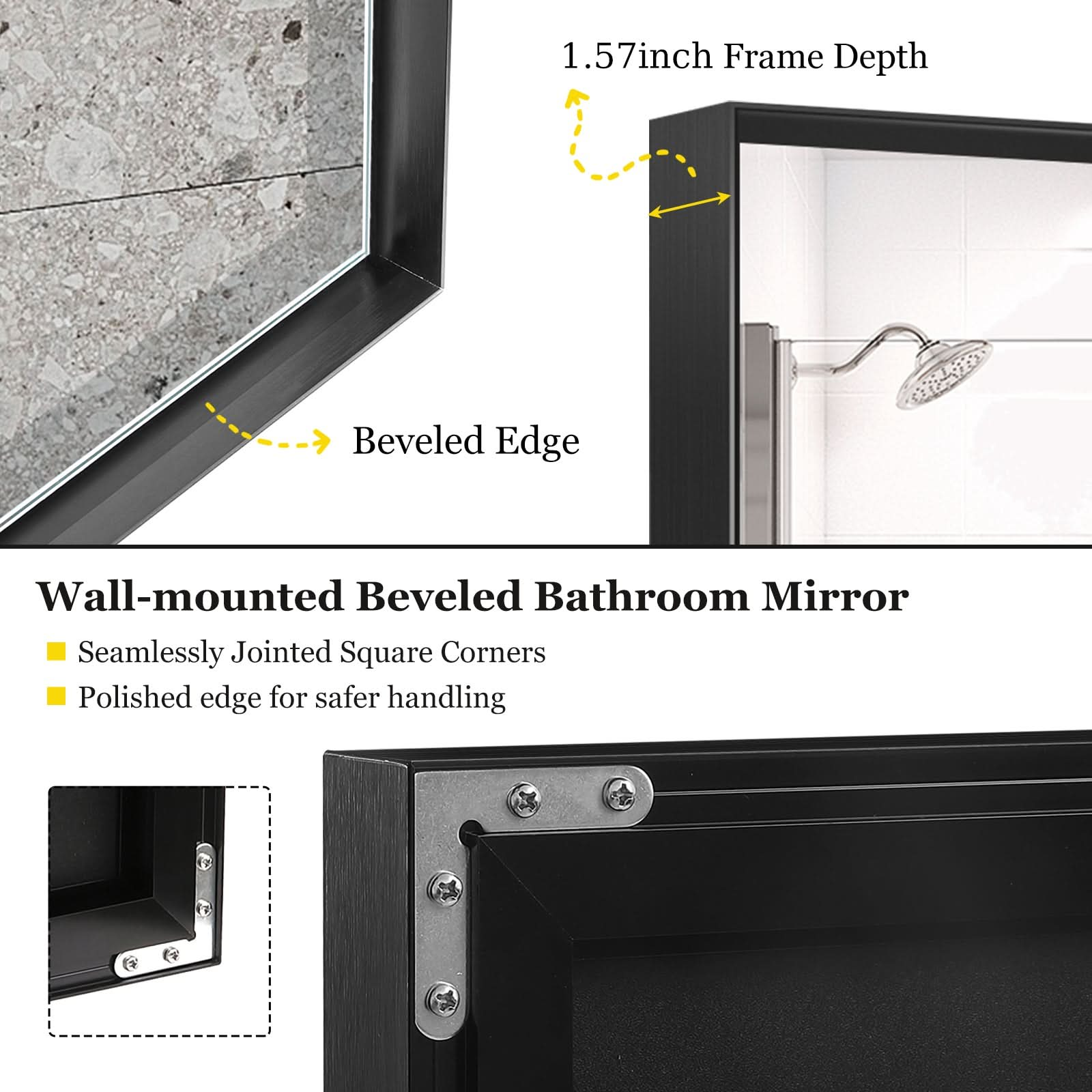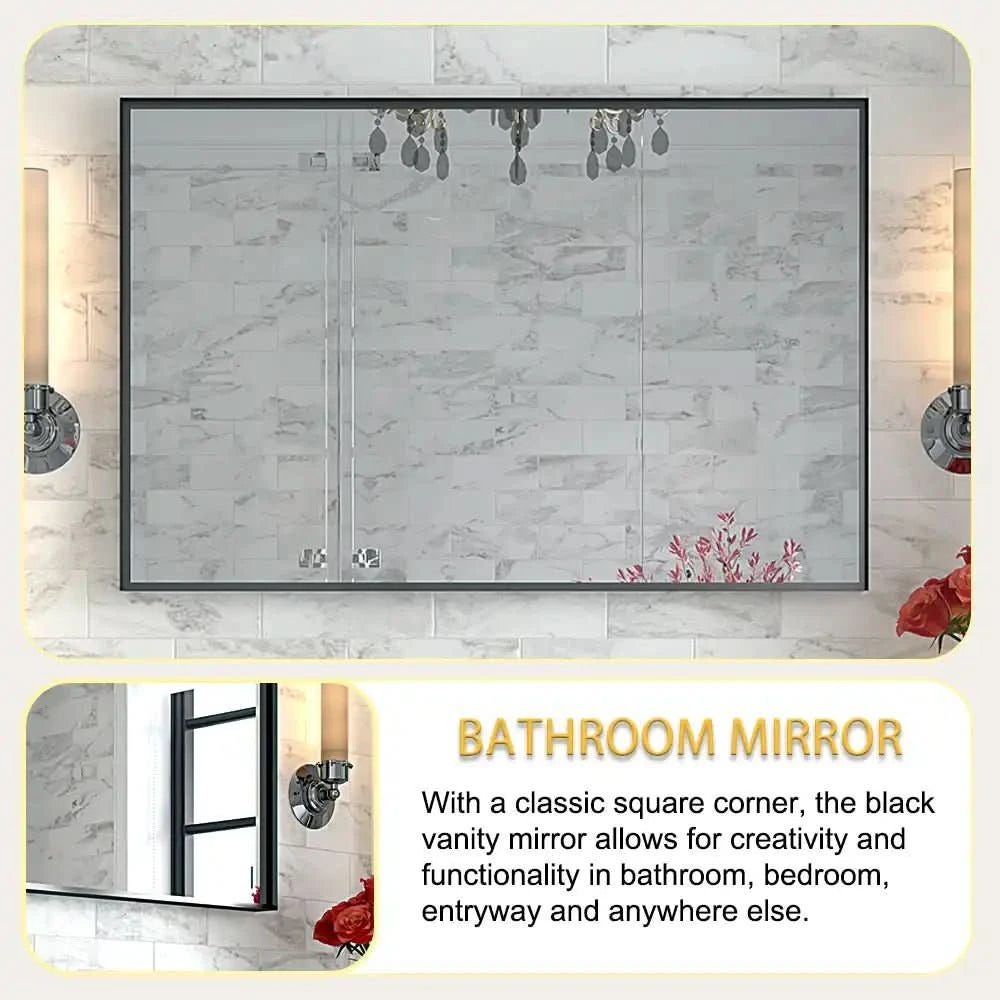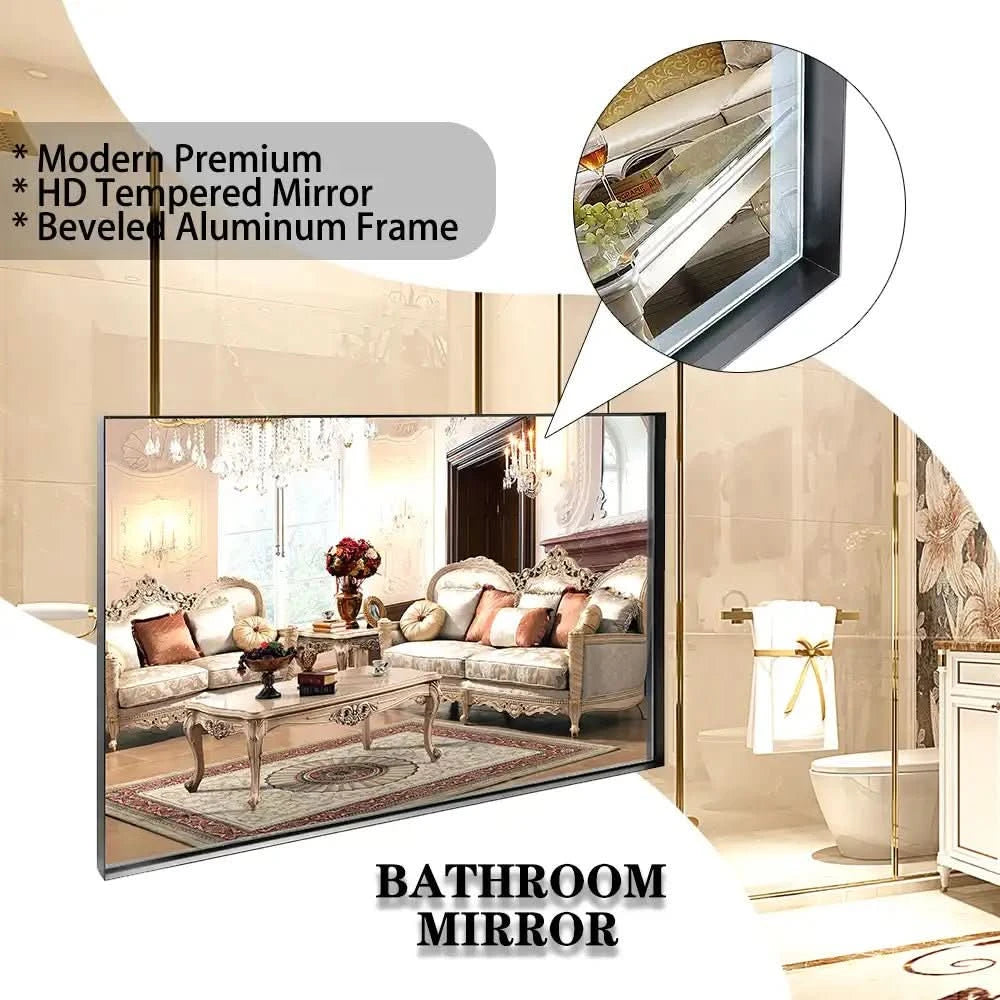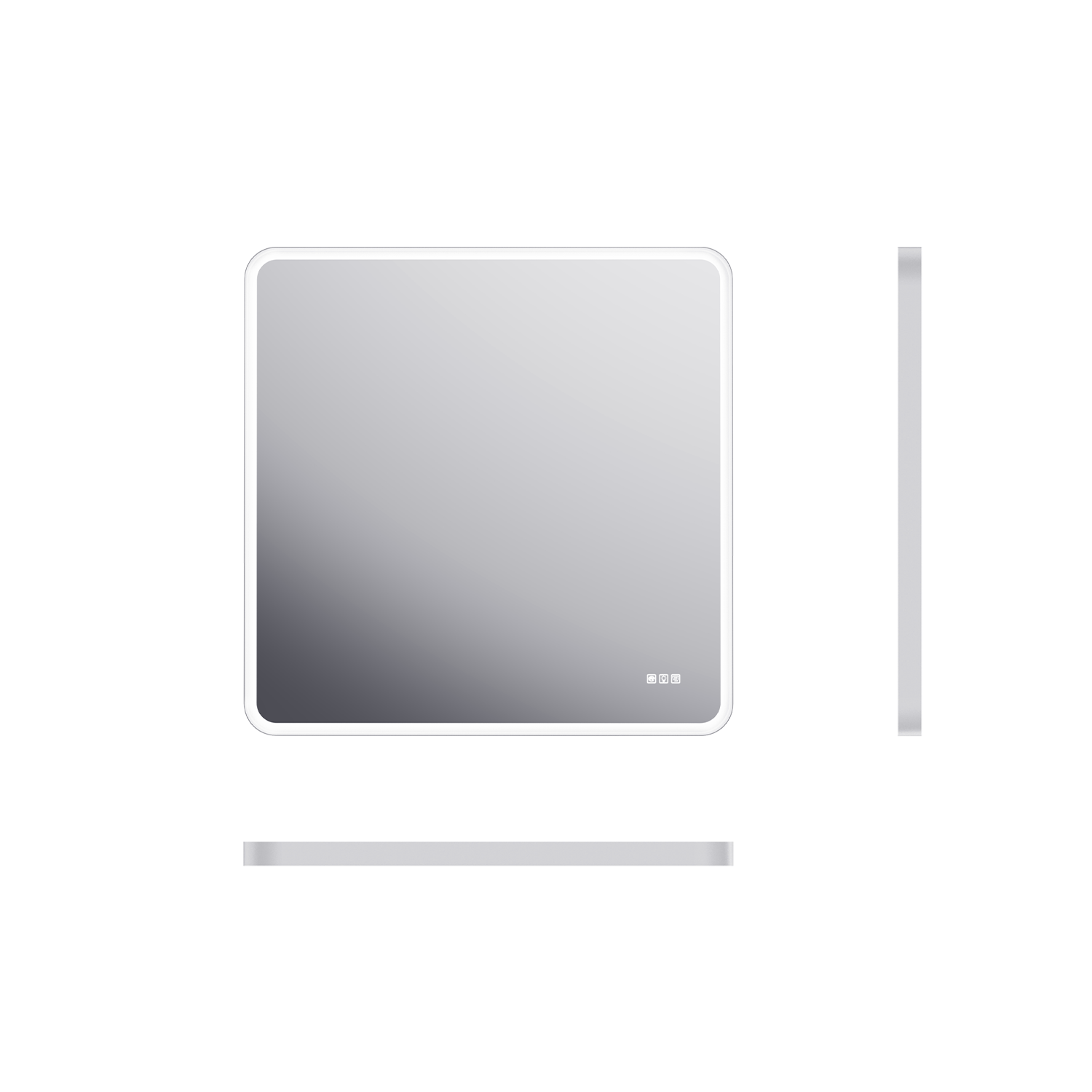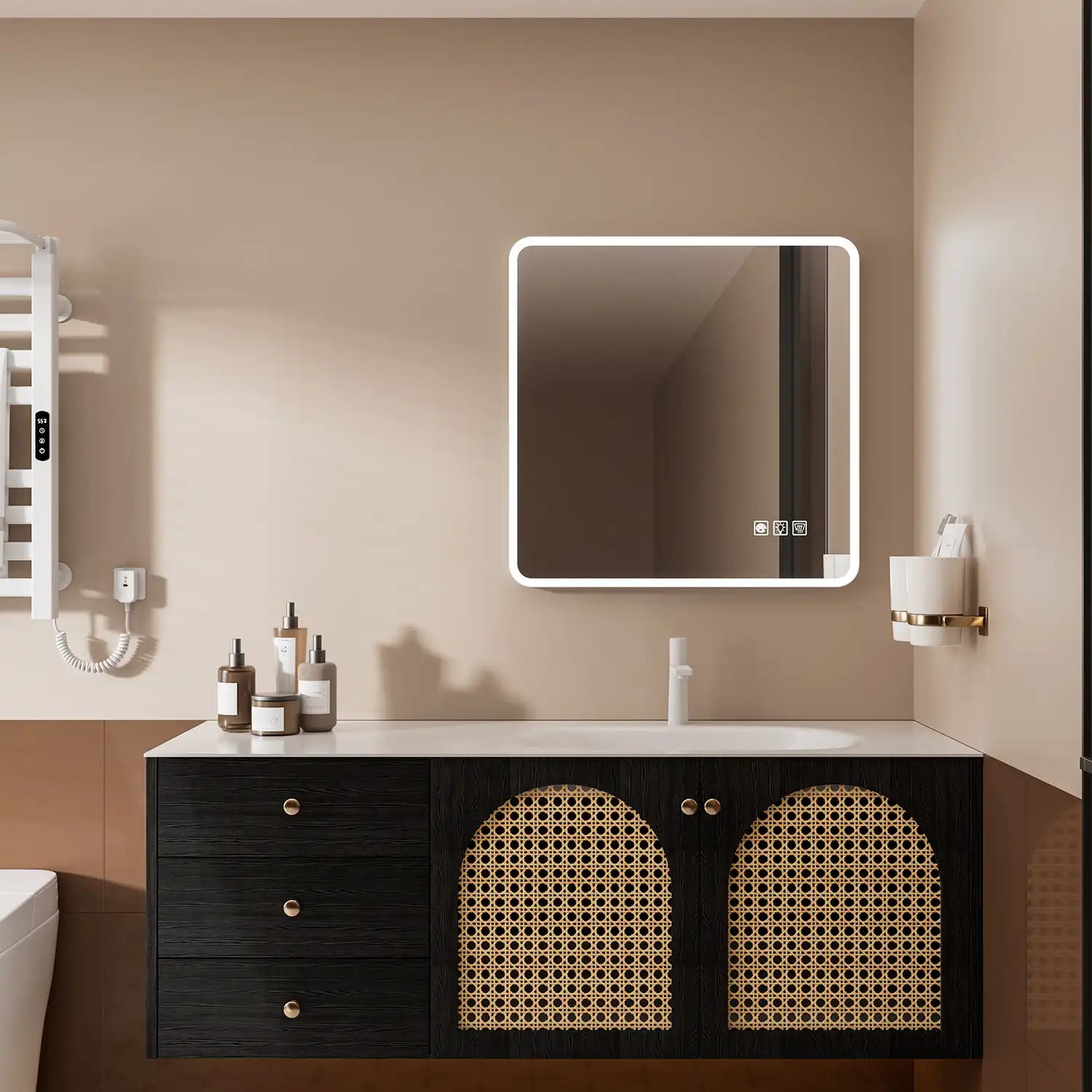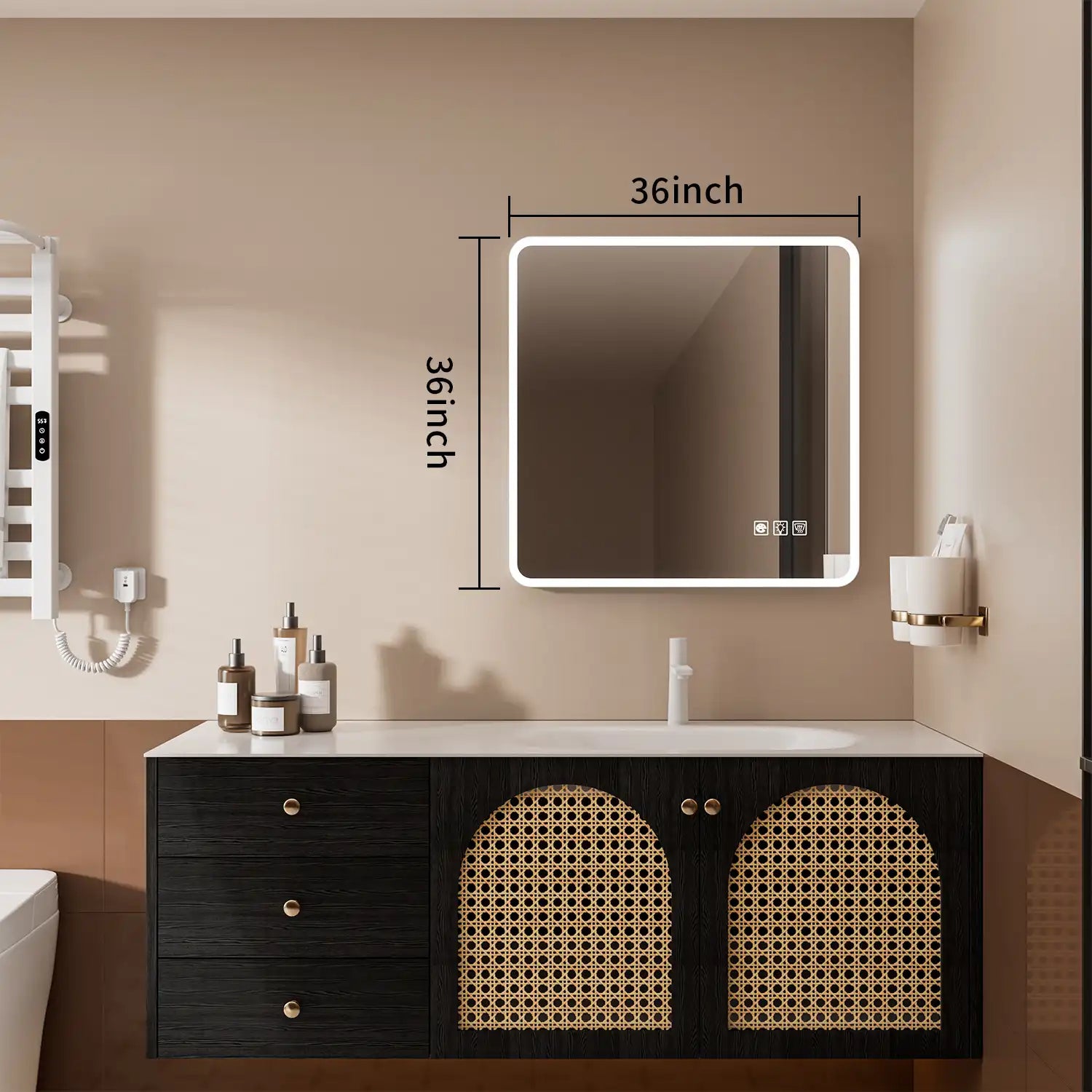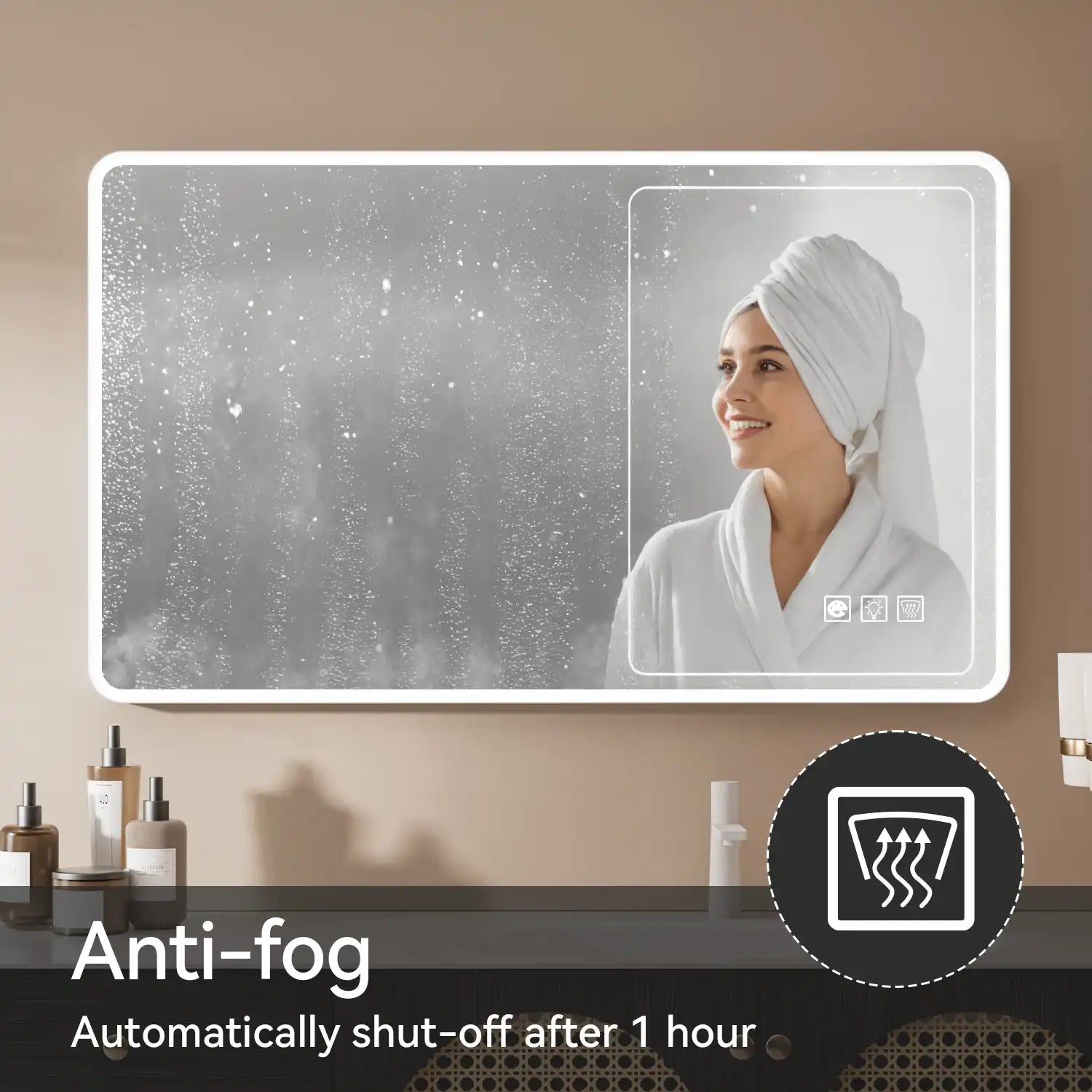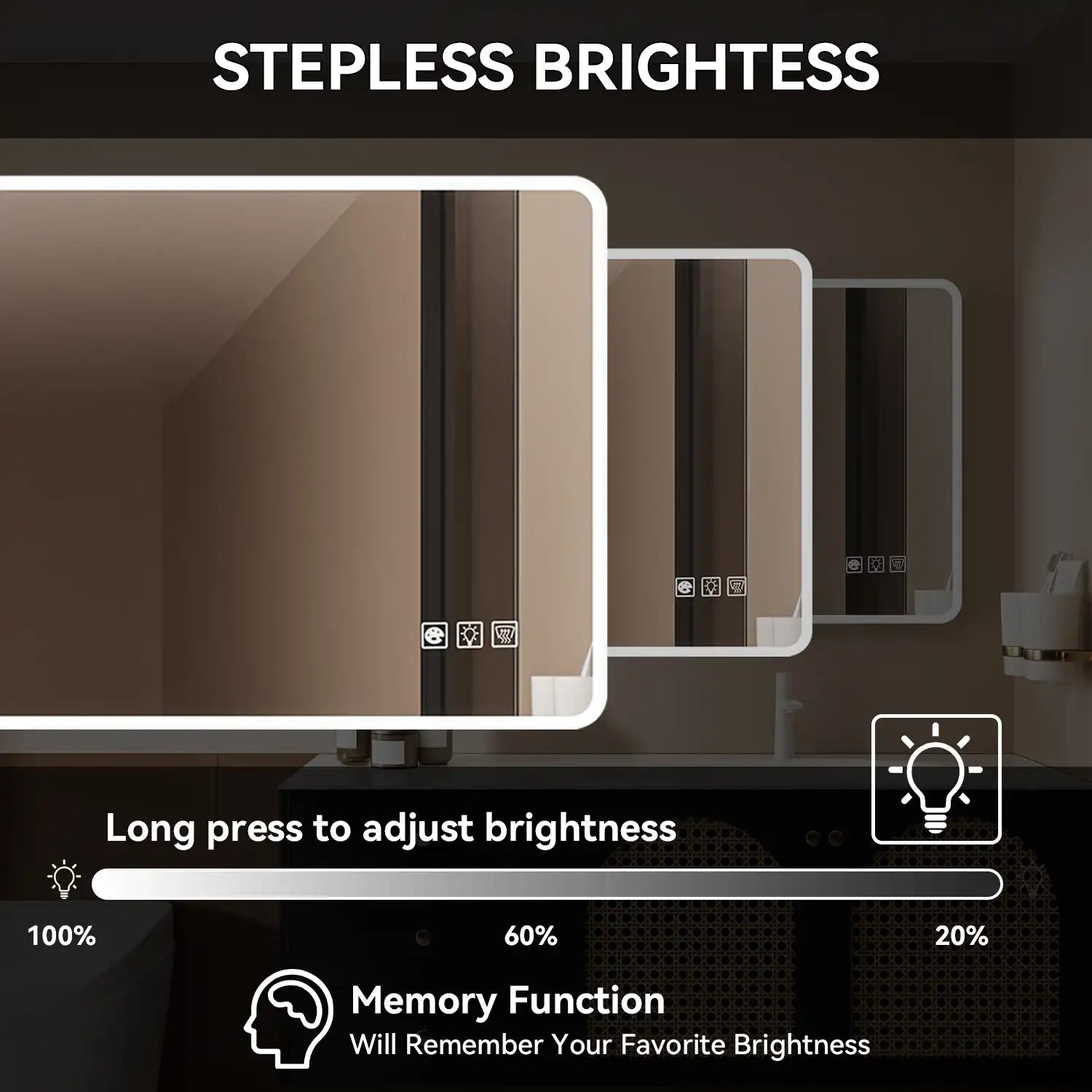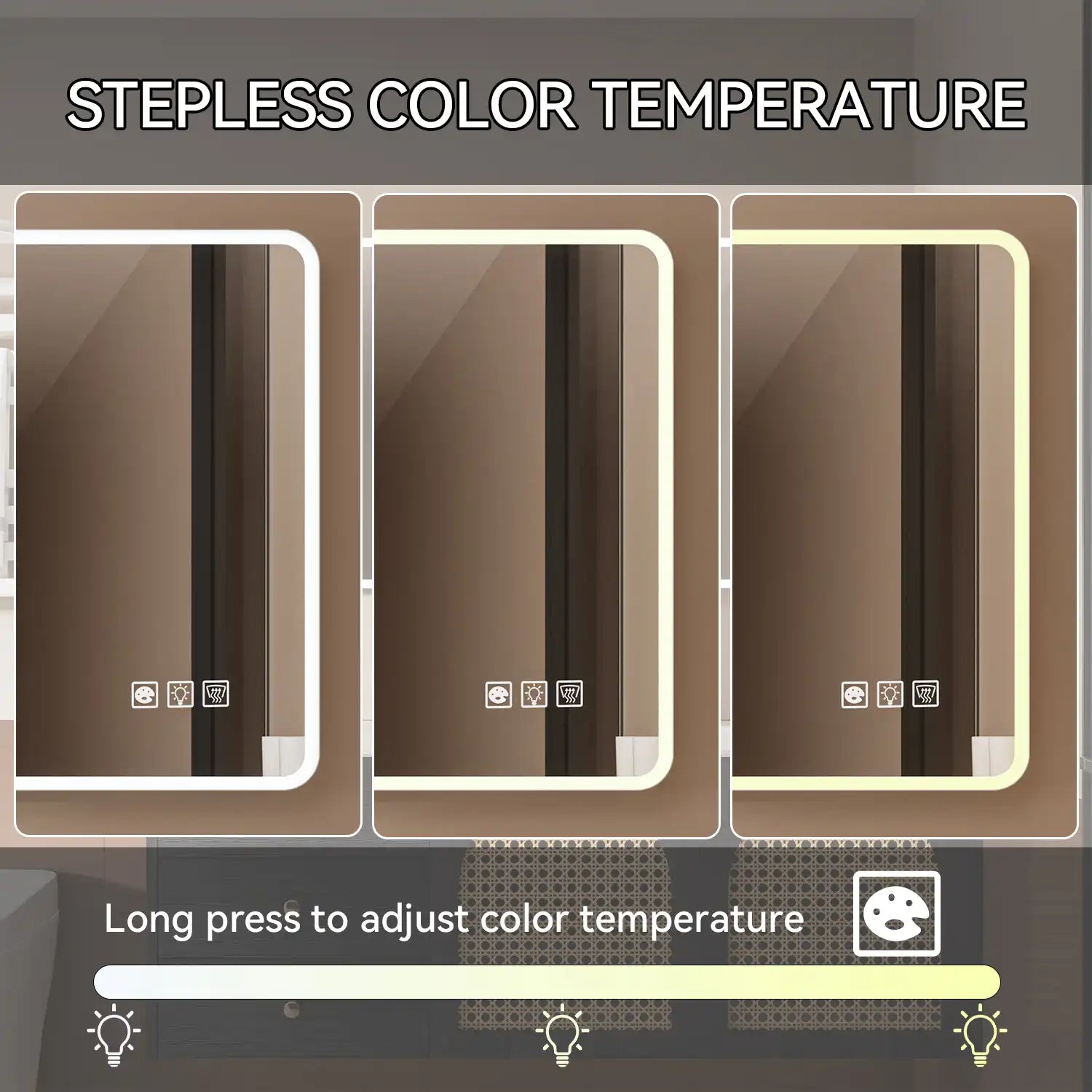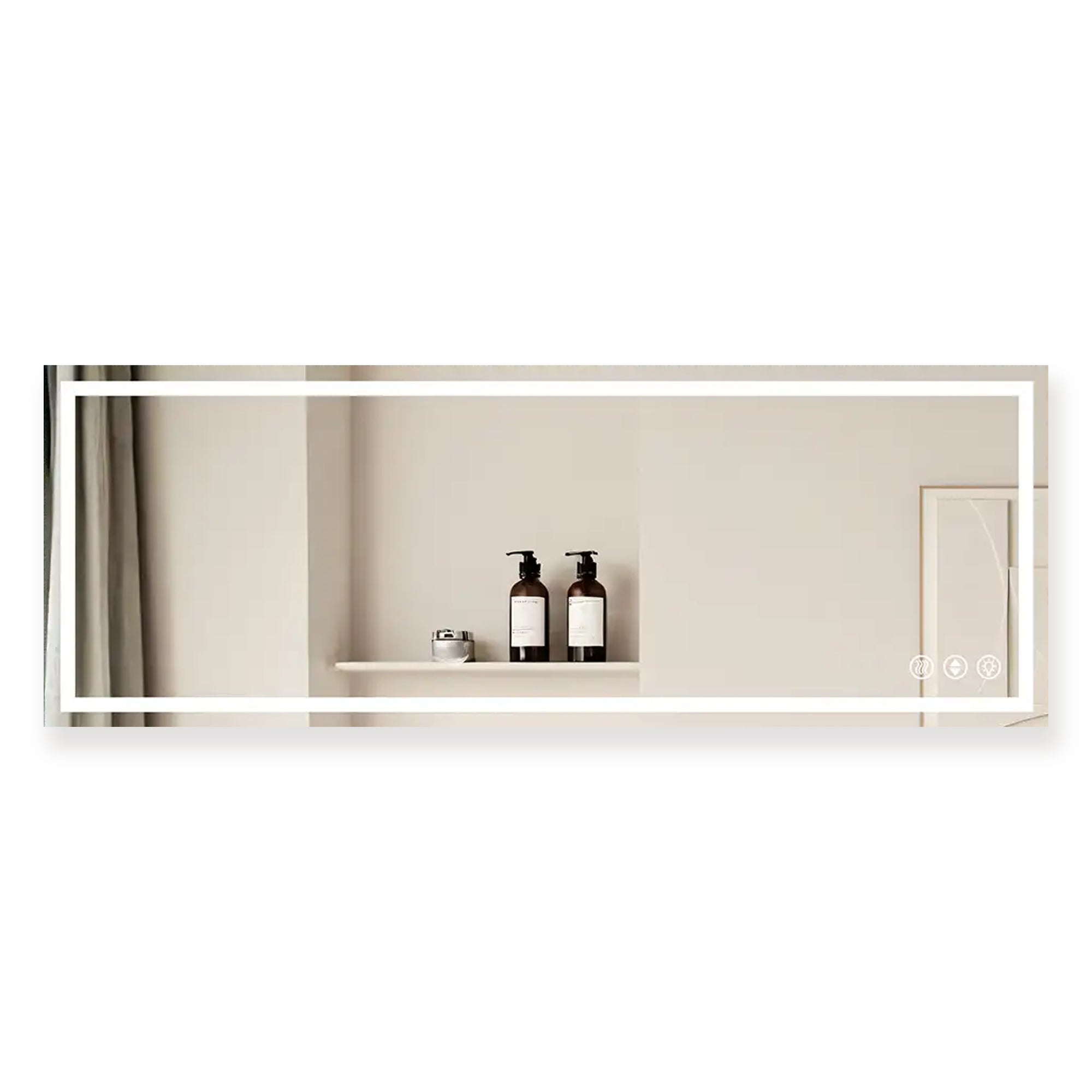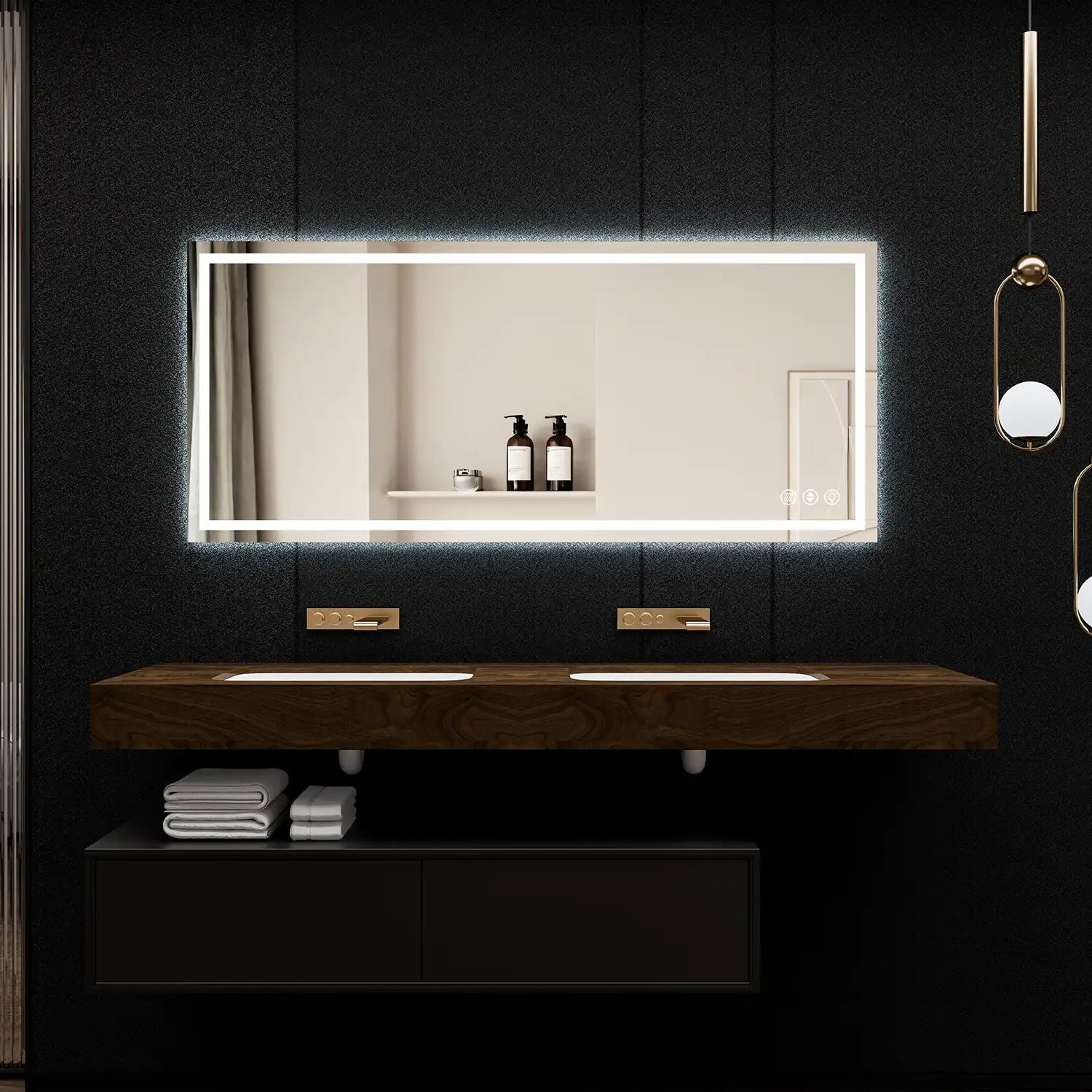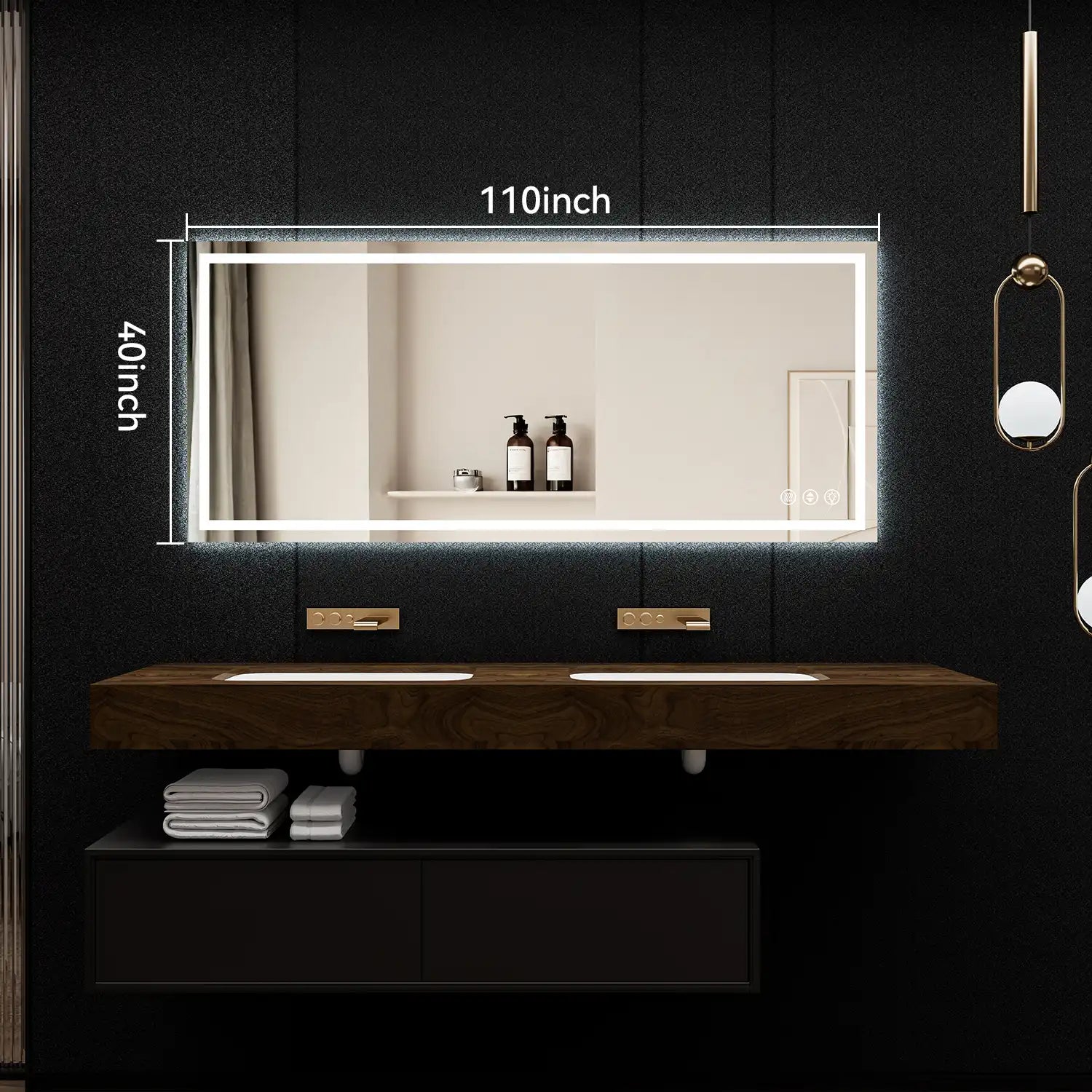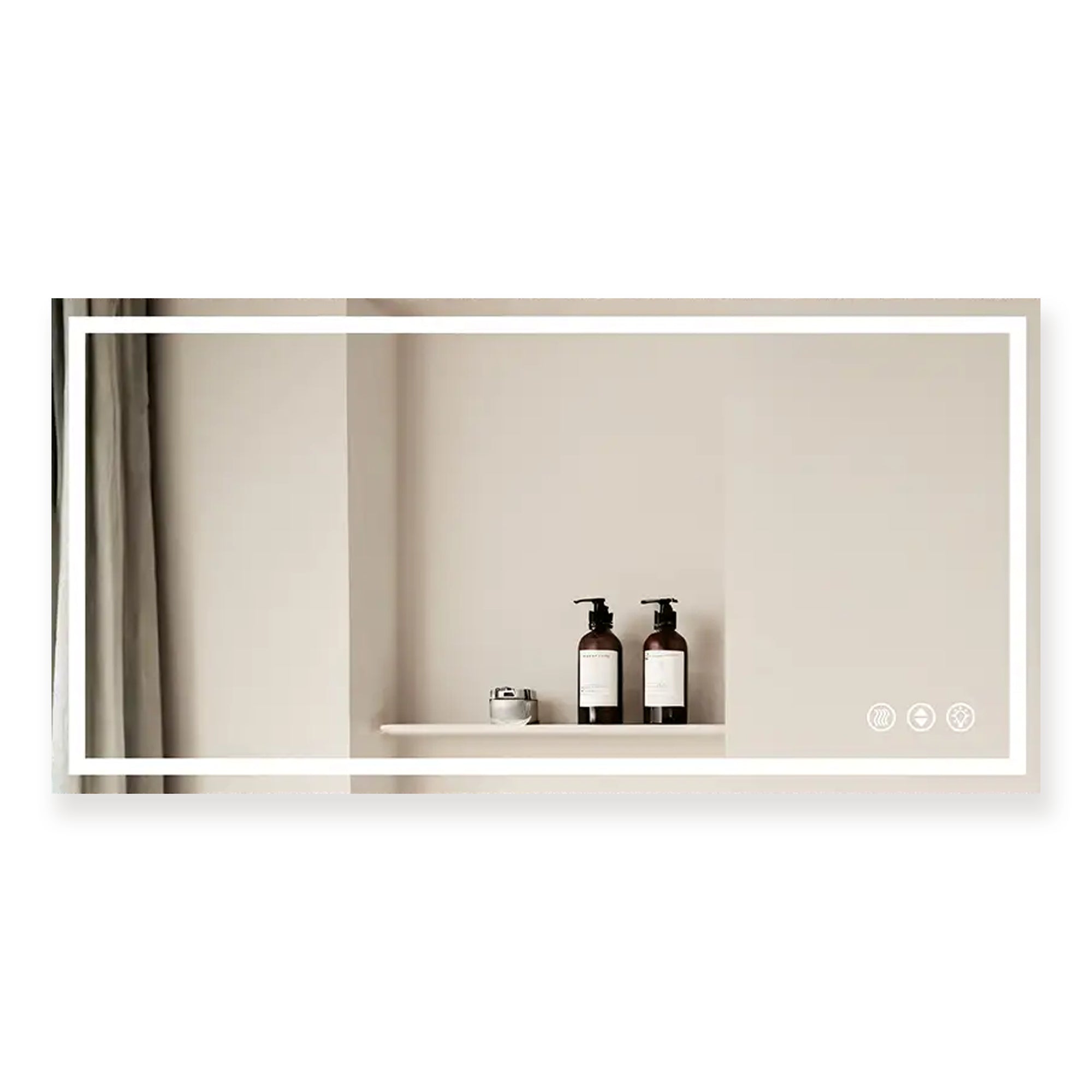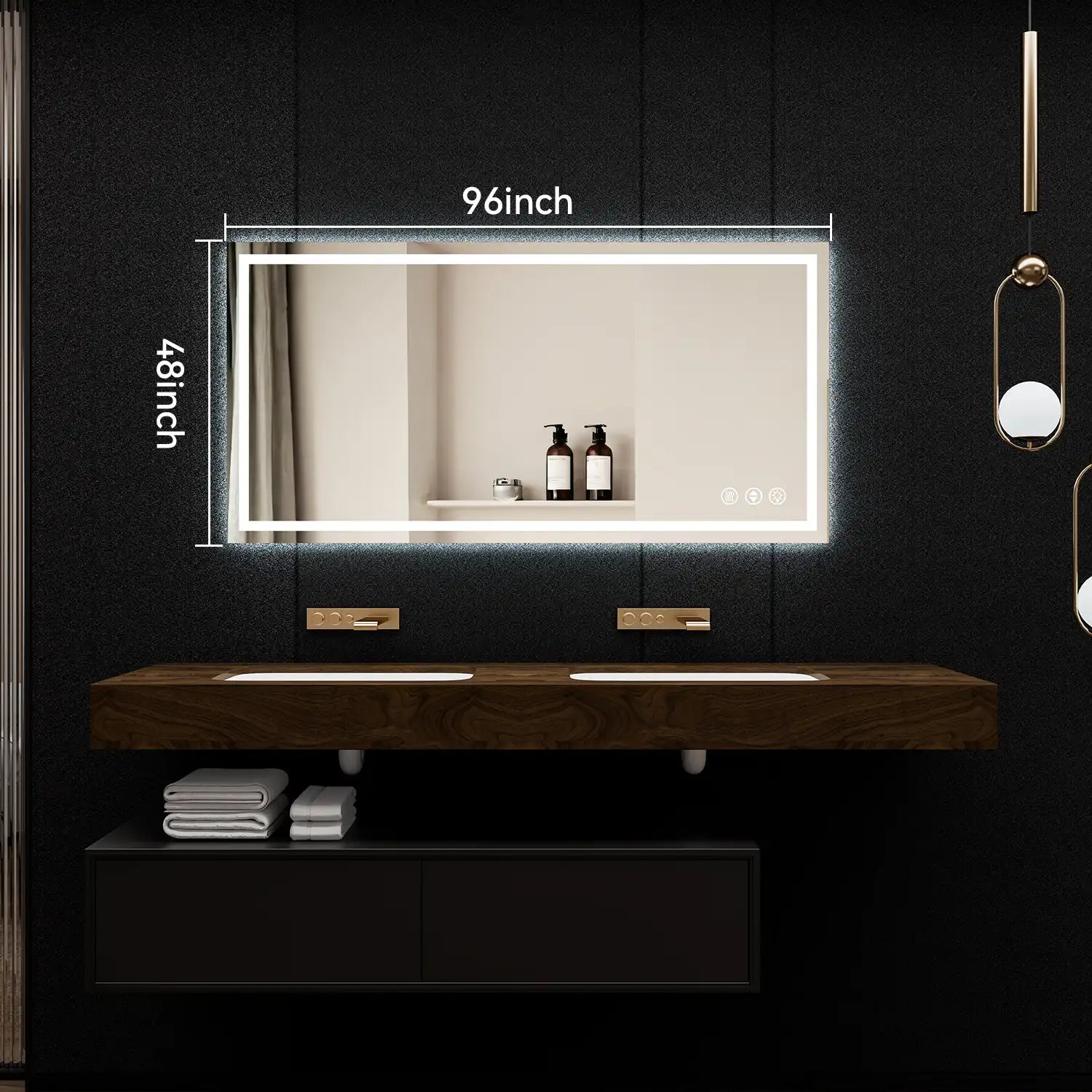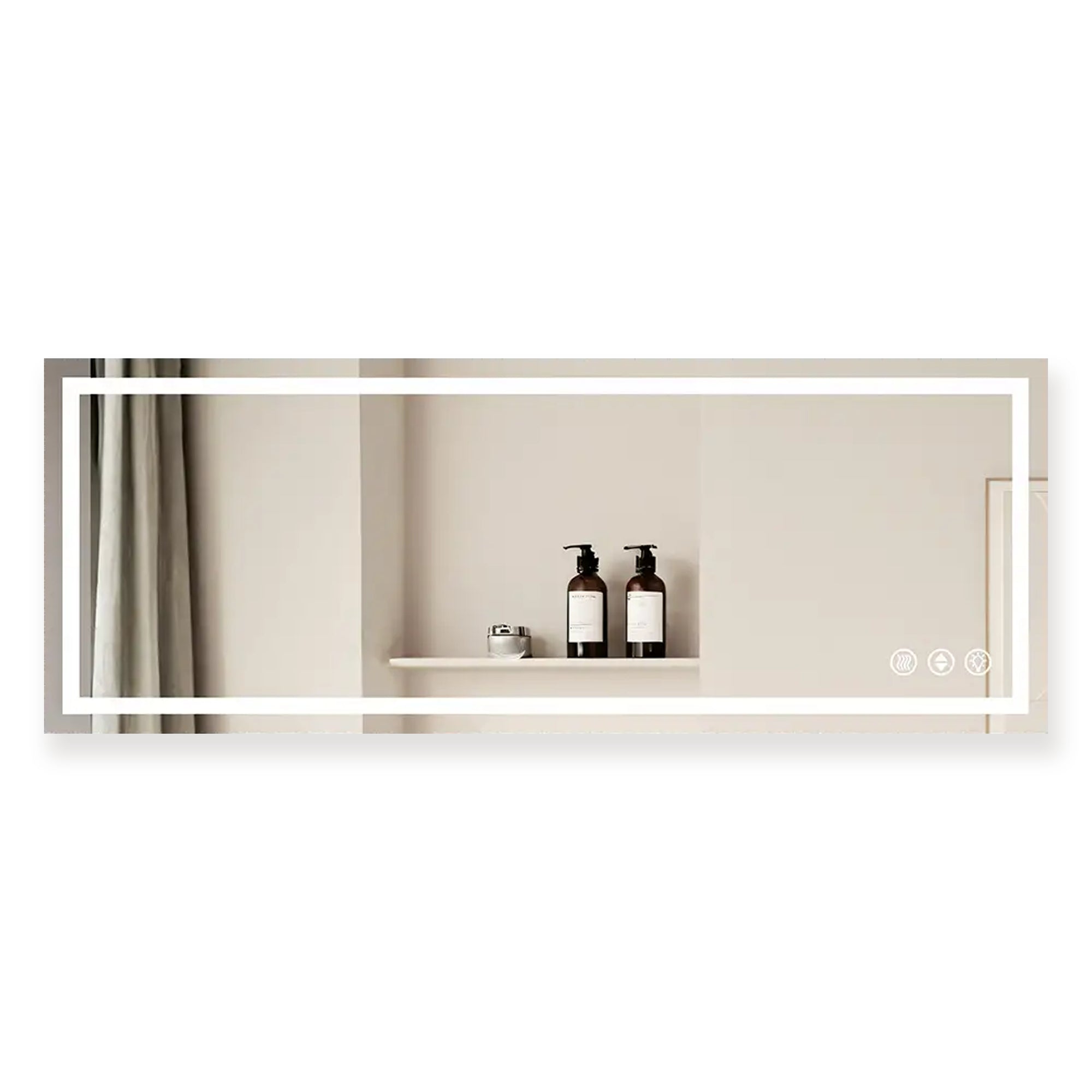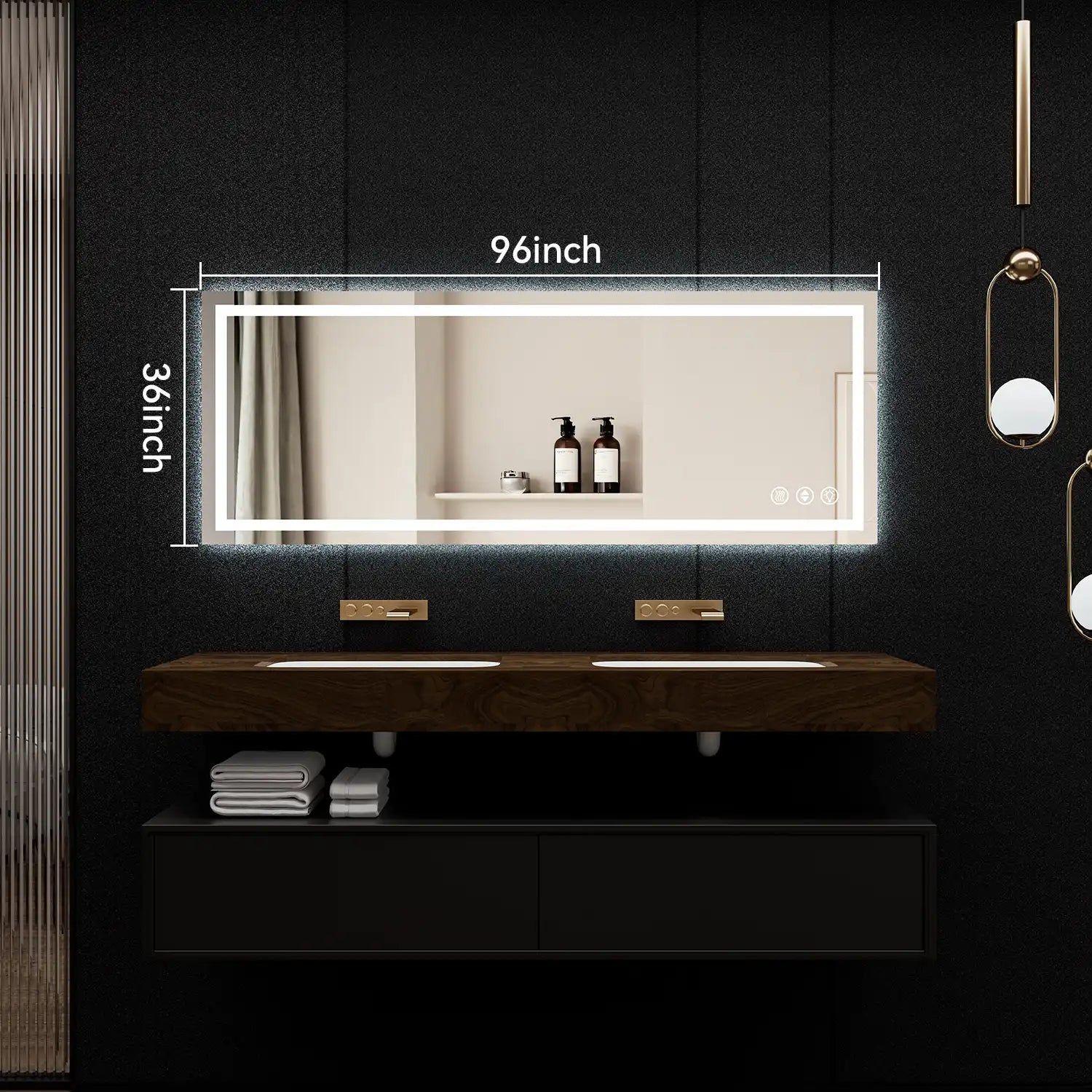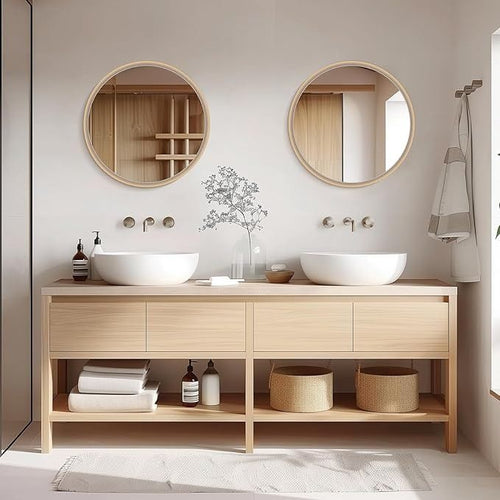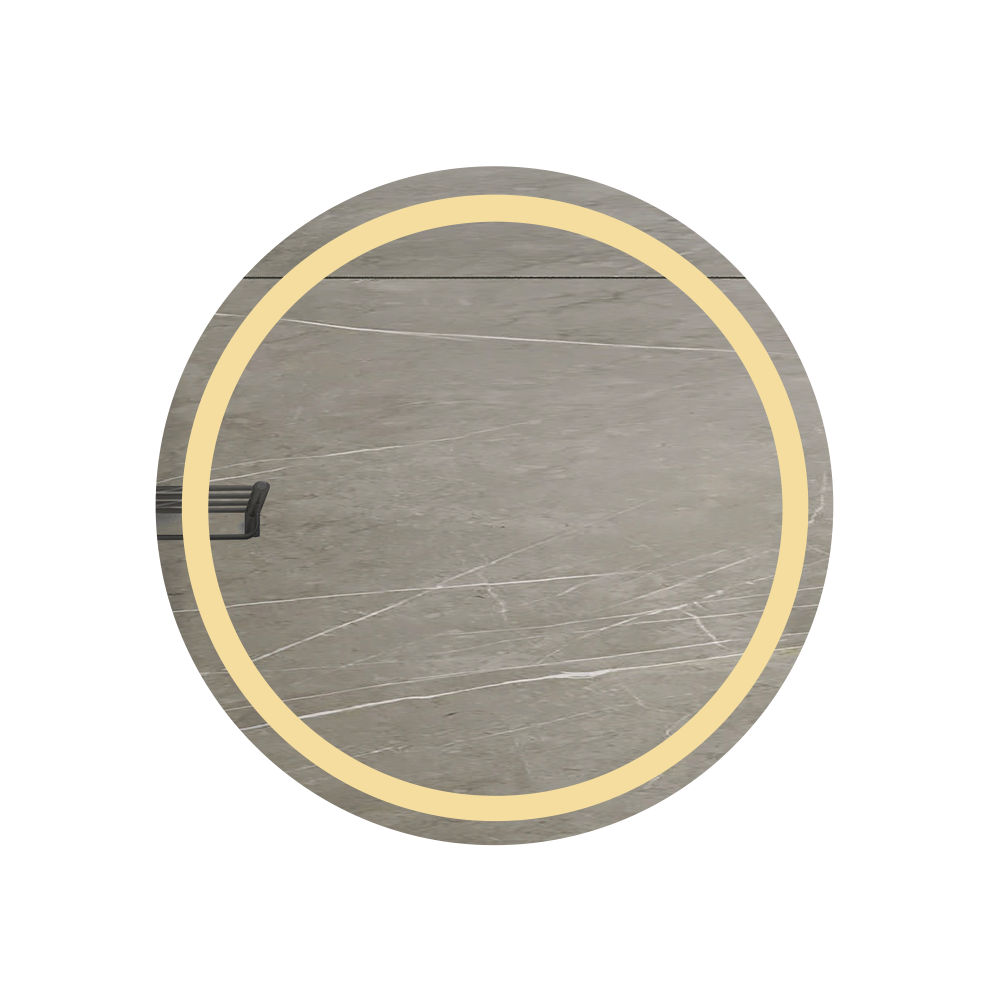Table of Contents
- Why the Size of Your Round Bathroom Mirror Matters
- Step-by-Step Vanity Mirror Size Guide
- Special Scenarios in the Vanity Mirror Size Guide
- Common Mistakes to Avoid
- Vanity Mirror Style Guide
- Frequently Asked Questions (FAQ)
- Conclusion
- Related Articles
Designing your bathroom isn't just about picking the right tiles or fixtures—your vanity mirror plays a central role in defining both the functionality and the style of the space. This vanity mirror size guide will walk you through everything you need to know: how to measure your vanity, how to select the right mirror size, where to hang it, and how to coordinate with lighting and design.
Whether you're updating a small guest bathroom or creating a luxury double vanity setup, this comprehensive guide will help you choose the best vanity mirror for your needs.

Why the Size of Your Round Bathroom Mirror Matters
Functionality and Practicality
A bathroom mirror is not just a decorative item; it serves a vital role in daily tasks such as shaving, applying makeup, and washing your face. The right-sized mirror can significantly improve functionality, especially when it comes to providing adequate reflection space. A mirror that’s too small won’t provide enough coverage, while a mirror that’s too large may overwhelm the space, making it less practical.
- Small Mirrors in Large Bathrooms: In larger bathrooms, using a small mirror can limit visibility and make it harder to perform tasks that require a good reflection.
- Large Mirrors in Small Bathrooms: While large mirrors can add luxury, in small bathrooms, they can make the space feel cramped and overwhelming.
Visual Balance and Proportion
Round mirrors are particularly known for their soft lines, which can complement other bathroom elements like the vanity, sink, and shower area. An appropriately sized mirror can create visual balance, making the space feel cohesive and well-proportioned.
- Small Mirrors: If the mirror is too small, it might feel isolated, and disconnected from the other elements in the bathroom.
- Large Mirrors: On the other hand, oversized mirrors can make a small bathroom feel crowded, disrupting the overall balance of the space.
Step-by-Step Vanity Mirror Size Guide
Here's a practical framework for choosing the correct size and placement for your vanity mirror.
Step 1: Measure Your Vanity Width
- Rule of Thumb: The mirror should be 2–6 inches narrower than the vanity.
- Sink Coverage: The mirror must always be wider than the sink basin.
Recommended Sizes by Vanity Width:
| Vanity Width | Recommended Round Mirror Diameter |
|---|---|
| 24" | 18–22" |
| 30" | 22–26" |
| 36" | 24–30" |
| 48" | 30–36" |
| 60"+ | 36"+ or two mirrors (24–30" each) |

Step 2: Determine Mirror Height
Since round mirrors are measured in diameter, the "height" equals the same dimension as the width. Placement, however, depends on the countertop height.
- Countertop Height: Usually 34–36" from the floor.
- Bottom Gap: Leave 4–10" between the countertop and mirror bottom.
- Top Clearance: Keep at least 6" between the mirror top and ceiling.
If your countertop is 36", and your mirror diameter is 30", hang the bottom at 6" above the vanity. The top will then reach about 72", which is comfortable for most users.

Step 3: Set the Mirror at Eye Level
The center of the mirror should align with eye level for the majority of users.
- Average eye level = 64–68 inches from the floor.
- In multi-user bathrooms, choose a larger mirror (30–36") to accommodate different heights.

Step 4: Coordinate with Lighting
Your vanity mirror should work seamlessly with your lighting plan:
- Sconces: Place sconces 2–4" from the mirror edge. Round mirrors between 24–30" are ideal for sconce setups.
- Overhead Lights: Keep at least 3–6" clearance between the light and mirror top.
- Natural Light: Larger mirrors reflect more daylight, brightening the space.

Practical Tips from Real Design Scenarios
When applying this vanity mirror size guide, there are a few practical lessons that often come up in real design situations:
Match Mirror Width to Cabinet Sections
A useful approach is to align the mirror width with the cabinet section directly beneath it. This creates visual symmetry and ensures the mirror doesn't feel too small or too wide. For example, if your vanity has multiple cabinet divisions, the mirror width should roughly match the center section, leaving equal wall space on both sides.
Adjusting for Sconces on Either Side
If you plan to install sconces, you may need to reduce mirror width slightly—sometimes down to 18–20 inches—to fit lighting comfortably without overcrowding.
Ceiling Height and Mirror Placement
For bathrooms with high ceilings (e.g., 10 feet), the challenge is whether to place the mirror at a fixed distance above the counter or at eye level. The most balanced method is to average the heights of the main users. For instance, if one person is 5'3" and another is 5'10", centering the mirror between their eye levels keeps it practical for both.
Countertop Height Rule
With vanities at the standard 34" height, mirrors should generally be centered so that the midpoint of the mirror is roughly aligned with the averaged eye level of the household, ensuring usability across different heights.
These hands-on practices confirm the importance of not just following numbers mechanically but also adapting the vanity mirror size guide to your household's needs, lighting setup, and ceiling height.
Special Scenarios in the Vanity Mirror Size Guide
Single Vanity Bathrooms
- Mirrors should be centered above the sink.
- Width: 2–6" narrower than vanity.
- Diameter: 24–30" for most standard single vanities.
Double Vanity Bathrooms
Two main approaches:
1. One Large Round Mirror
- Diameter 36–48" depending on vanity width.
- Creates a seamless, modern look.
2. Two Separate Round Mirrors
- Each mirror should match the width of the respective sink.
- Maintain 4–6" gap between mirrors.
- Use frameless or thin-framed mirrors if the gap is under 4".
Small Bathrooms
- Use 18–24" round mirrors.
- Frameless designs save visual space.
- Install slightly higher to reflect more wall and give illusion of taller ceilings.
Large Bathrooms
- Oversized 36–42" round mirrors make a bold statement.
- Combine with dramatic lighting to create a luxury feel.
Common Mistakes to Avoid
1. Oversized Mirrors on Narrow Vanities
Example: A 40" mirror on a 36" vanity looks cramped and blocks sconces.
2. Tiny Mirrors on Large Vanities
Example: An 18" mirror above a 48" vanity looks disproportionate and unpractical.
3. Incorrect Height
- Hanging too high leaves shorter users out of frame.
- Hanging too low reduces headroom and makes the space feel cramped.

Vanity Mirror Style Guide
The right frame and style transform a functional mirror into a design statement.
- Modern Minimalist: Frameless, LED-lit mirrors between 24–30".
- Traditional: 30–36" round mirrors with ornate frames.
- Rustic/Farmhouse: Wood-framed mirrors in medium sizes (24–30").
- Industrial: Metal-framed, matte black finishes.

Frequently Asked Questions (FAQ)
1. What is the best vanity mirror size guide for a standard U.S. vanity (36 inches wide)?
For a 36-inch vanity, the ideal round mirror size is 24–30 inches in diameter. This range provides enough coverage without exceeding the vanity width, which is a common design rule in American bathrooms.
2. How high should I hang a vanity mirror above a bathroom countertop in the U.S.?
Most U.S. vanities are 34–36 inches tall. The bottom of your mirror should sit 4–10 inches above the countertop, and the center should be placed at 64–68 inches from the floor—roughly average eye level for most adults.
3. What size mirror works best for a double vanity in American homes?
For a typical 60-inch double vanity, you can either install two round mirrors (24–30 inches each) or one large mirror 36–48 inches wide. In U.S. homes with sconces on each side, two smaller mirrors are often preferred for balance.
4. Can round vanity mirrors help small U.S. bathrooms feel bigger?
Yes. In compact bathrooms—such as those in condos or guest baths—a frameless 18–24 inch round mirror is ideal. It reflects more wall space, adds brightness, and gives the illusion of a larger room.
5. Do tall U.S. ceilings affect vanity mirror placement?
Yes. Many American homes have ceilings up to 9–10 feet tall. In this case, avoid hanging the mirror too high; instead, keep the center aligned with average eye level. A larger mirror (30–36 inches) works well to fill vertical space without leaving too much empty wall above.

Conclusion
Choosing the right vanity mirror is about balance, proportion, and usability. By following this vanity mirror size guide, you can ensure your bathroom mirror not only looks perfect but also functions flawlessly.
From small powder rooms to expansive master suites, the right mirror size enhances design, improves lighting, and makes everyday tasks easier. Whether you choose a sleek frameless design or a bold framed round mirror, remember: proportion is the key.
With this guide—and with trusted brands like ACE DECOR, Kohler, Frameless Mirrors, and Delta—you'll be able to choose the perfect vanity mirror size for any bathroom.
Related Articles
Looking for more bathroom design inspiration? Explore these related guides to help you perfect every detail of your vanity and mirror setup.
- "How to Choose the Right Vanity Depth: A Complete Guide"
- "Choosing the Right Freestanding Single Bathroom Vanity for a Clean, Modern Look"
- "Top Benefits of Installing a Bathroom Vanity with Storage Tower"
- "Double Sink Bathroom Vanity Trends: What's In and What's Out"
- "How to Make a Bathroom Vanity: A Comprehensive DIY Guide"
- "How to Fix a Cracked Mirror: A Complete Guide for DIY and Replacement"
- "Top Mistakes to Avoid When Choosing a Mirror Size for Your Bathroom Vanity"
- "The Ideal Medicine Cabinet Mirror with Lights to Maximize Small Bathroom Space"

